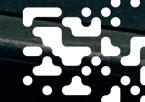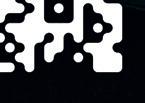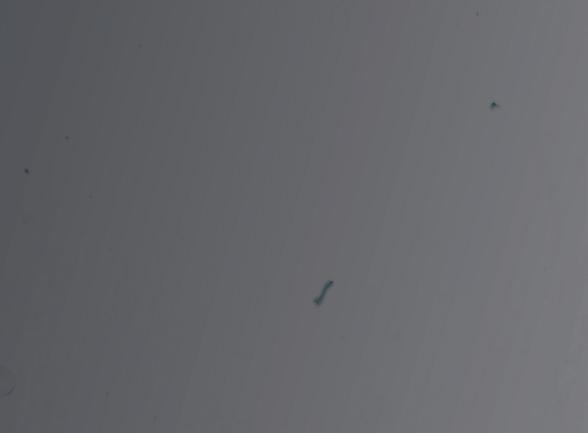
Festschrift
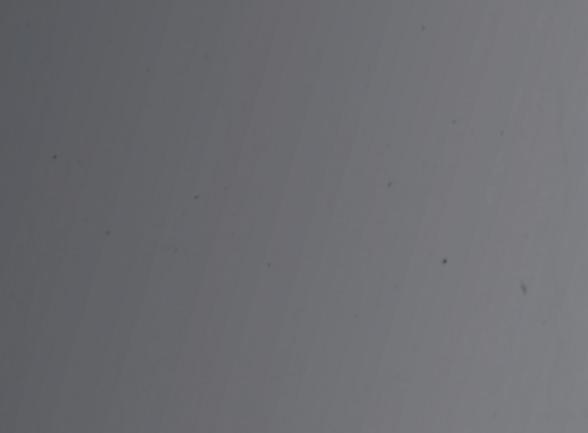
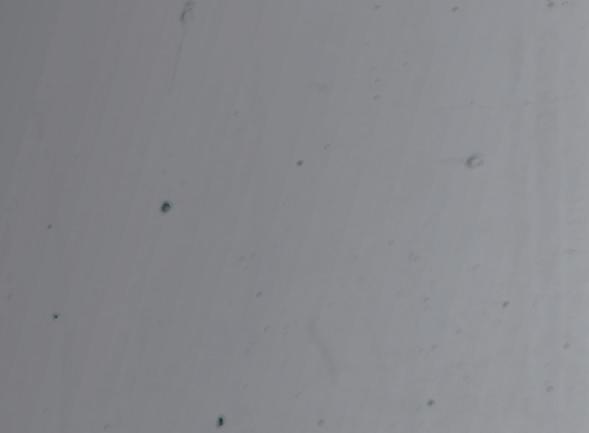
Celebratory publication / Pubblicazione celebrativa
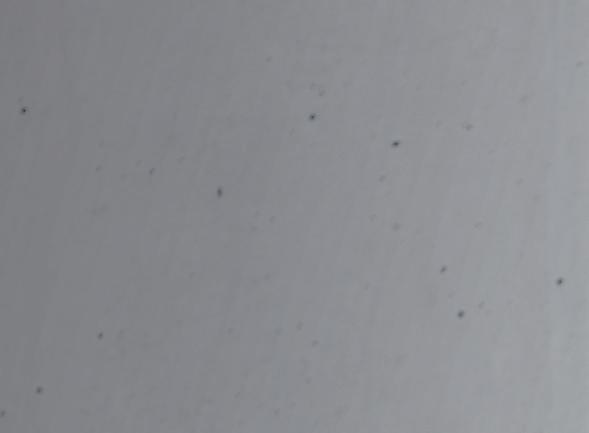
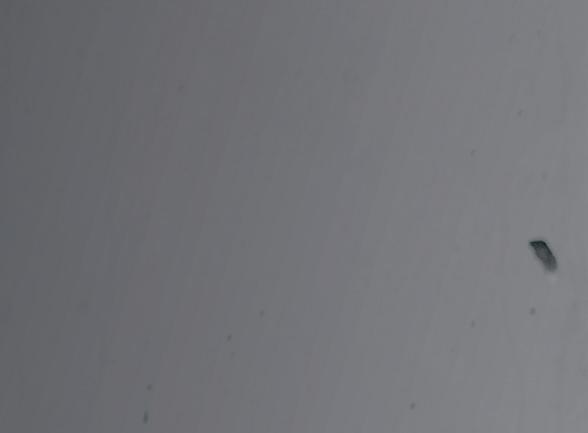
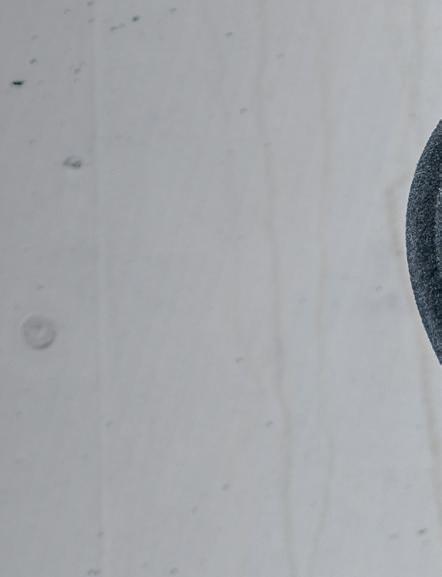
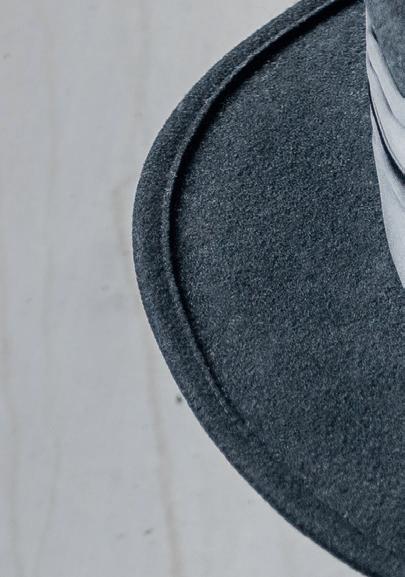
18. - 20. Juli 2025
Lech Zürs am Arlberg
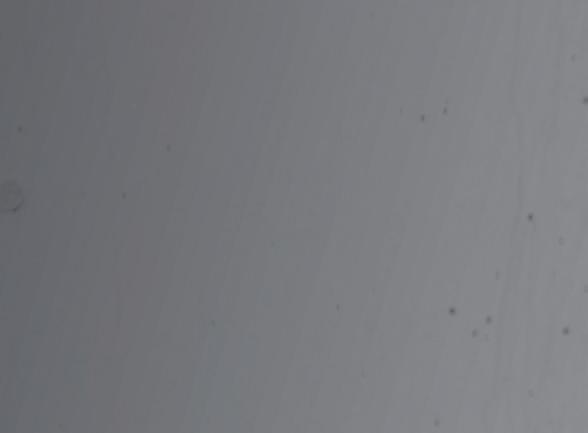
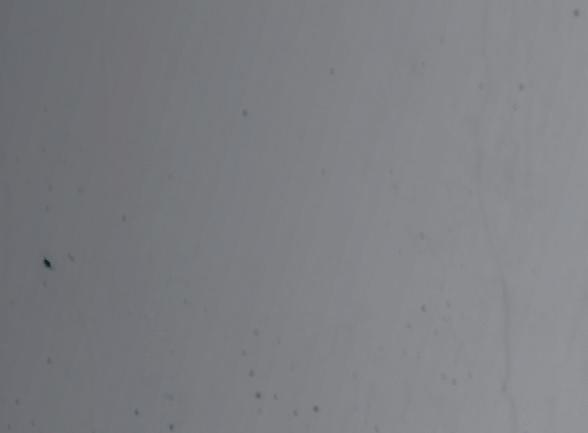
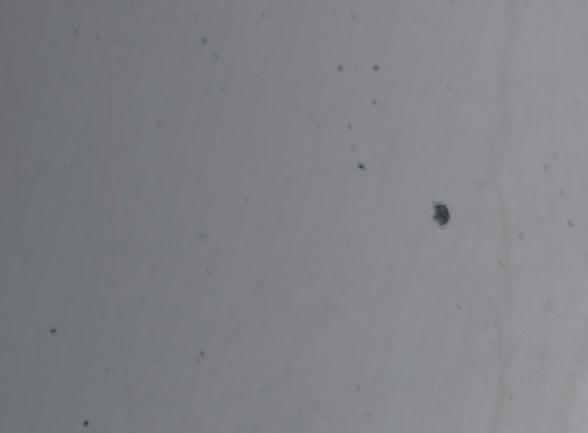
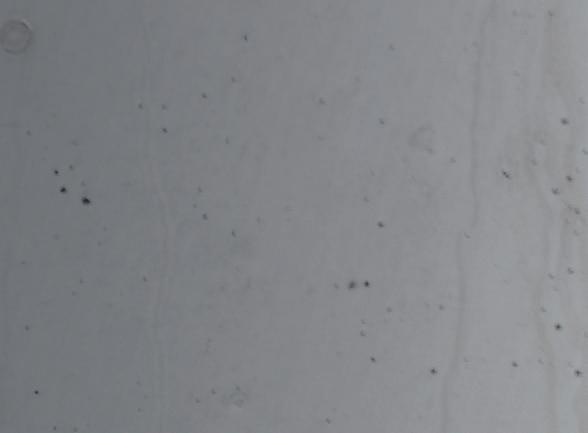
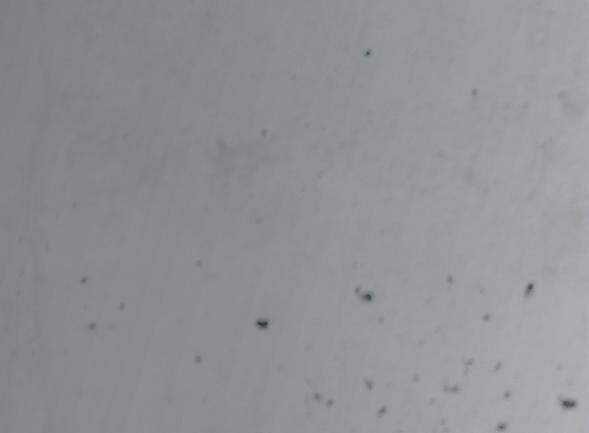
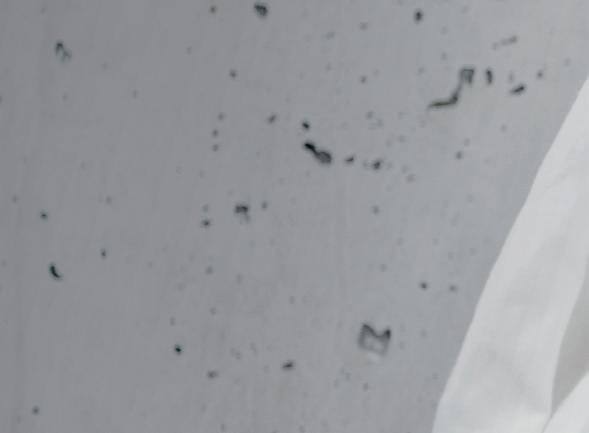
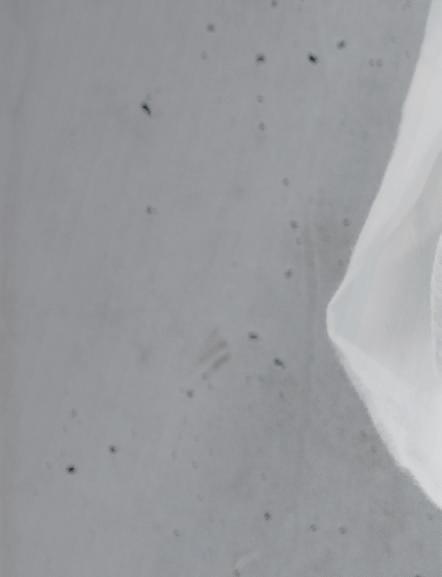
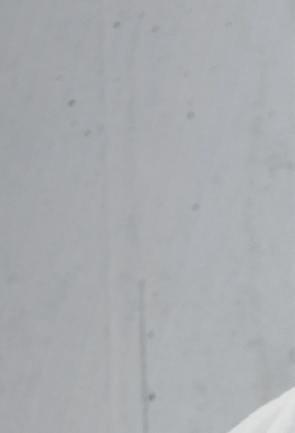






Celebratory publication / Pubblicazione celebrativa




18. - 20. Juli 2025
Lech Zürs am Arlberg














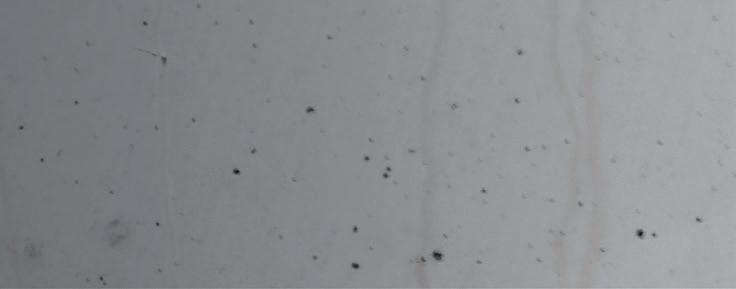





„Verwurzelung ist keine Nostalgie – sie ist Zukunftskraft“ Lech ist stolz, Gastgebergemeinde dieses 22. Internationalen Walsertreff ens zu sein. Nicht aus Prestige, sondern aus Verantwortung. Unsere Identität als Walsergemeinde ist nicht Folklore. Sie ist geprägt von einer tiefen inneren Haltung: Demut vor der Natur, Achtung vor dem Mitmenschen, und Vertrauen in die Gemeinschaft. Diese Werte tragen uns – gestern, heute und morgen. In einer Zeit, in der vieles fl üchtig und orientierungslos wirkt, bietet das Walsertreff en einen festen Bezugspunkt. Es erinnert daran, dass Verwurzelung nicht Rückschritt bedeutet, sondern Orientierung. Dass Heimat nicht Enge heißt, sondern Verbindung.
Ich danke allen, die dieses Fest vorbereitet und getragen haben – besonders Ludwig Muxel, der dieses Treff en mit Hingabe organisiert und mit seinem Wissen bereichert hat. Mein Dank gilt ebenso der Tourismusorganisation, den Vereinen, Musikerinnen und Musikern, den vielen Helferinnen und Helfern, den Gastgeberinnen und Gastgebern, die diese drei Tage möglich machen. Möge dieses Walsertreff en nicht nur ein schönes Ereignis sein – sondern eine Erinnerung daran, was Bestand hat – und was uns als Menschen trägt.
Willkommen in Lech. Willkommen daheim – in der Walsergemeinschaft.
‘Rootedness is not nostalgia - it is future strength’ Lech is proud to be the host community of this 22nd International Walser Meeting. Not out of prestige, but out of responsibility. Our identity as a Walser community is not folklore. It is characterised by a deep inner attitude: humility towards nature, respect for our fellow human beings and trust in the community. These values sustain us - yesterday, today and tomorrow. At a time when many things seem fleeting and disorientating, the Walser Meeting offers a fixed point of reference. It reminds us that being rooted does not mean regression, but orientation. That home does not mean narrowness, but connection.
I would like to thank everyone who prepared and supported this festival - especially Ludwig Muxel, who organised this meeting with dedication and enriched it with his knowledge. My thanks also go to the tourism organisation, the clubs, musicians, the many helpers and the hosts who have made these three days possible. May this Walser Meeting not only be a beautiful event - but a reminder of what endures - and what sustains us as human beings.
Welcome to Lech. Welcome home - to the Walser community.
“Il radicamento non è nostalgia - è forza futura”
Lech è orgogliosa di essere la comunità ospitante di questo 22° Incontro Internazionale Walser. Non per prestigio, ma per responsabilità. La nostra identità di comunità walser non è folcloristica. È caratterizzata da un profondo atteggiamento interiore: umiltà verso la natura, rispetto per il prossimo e fiducia nella comunità. Questi valori ci sostengono, ieri, oggi e domani. In un momento in cui molte cose sembrano fugaci e disorientanti, l‘Incontro Walser offre un punto di riferimento fisso. Ci ricorda che essere radicati non significa regredire, ma orientarsi. Che patria non significa ristrettezza, ma connessione.
Vorrei ringraziare tutti coloro che hanno preparato e sostenuto questo festival - in particolare Ludwig Muxel, che ha organizzato questo incontro con dedizione e lo ha arricchito con le sue conoscenze. I miei ringraziamenti vanno anche all‘organizzazione turistica, ai club, ai musicisti, ai molti aiutanti e ai padroni di casa che hanno reso possibile questi tre giorni. Che questo Incontro Walser possa essere non solo un bellissimo evento, ma anche un promemoria di ciò che dura e di ciò che ci sostiene come esseri umani.
Benvenuti a Lech. Benvenuti a casa - nella comunità Walser.

GERHARD LUCIAN
Bürgermeister von Lech
Mayor of Lech / Sindaco di Lech
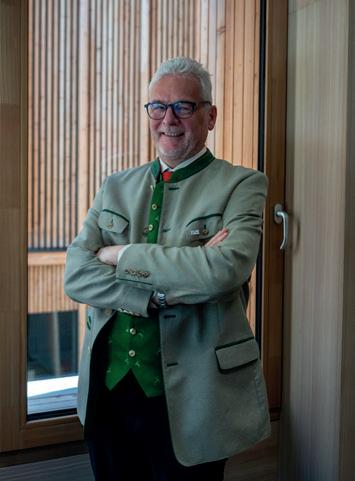
„Kultur ist kein Zusatz – sie ist das Fundament“
Wenn wir heute über nachhaltigen und wettbewerbsfähigen Tourismus sprechen, dann geht es nicht allein um ökologische Standards. Es geht vor allem um das, was bleibt, wenn der Moment vorüber ist: Erinnerung, Beziehung, Bedeutung. Das Internationale Walsertreff en ist ein Ausdruck genau dessen. Es erinnert uns daran, dass die Wurzeln unseres Ortes nicht rein im Tourismus liegen, sondern in einer 700 Jahre alten Kultur des Wandels, der Selbstverantwortung und des Miteinanders. Die Walser waren nie Menschen des Stillstands. Sie waren beweglich, anpassungsfähig – und dabei ihrer Herkunft stets treu.
Die Tourismusdestination Lech Zürs ist heute ein internationaler Ort. Doch gerade deshalb ist es unsere Aufgabe, die Kraft der Herkunft in die Zukunft zu tragen. Kultur ist kein dekoratives Beiwerk, sie ist das Fundament einer glaubwürdigen, nachhaltigen Destination.
Ich danke allen, die dieses Fest der Identität ermöglichen – und lade unsere Gäste ein, nicht nur die Landschaft zu entdecken, sondern das, was diese Landschaft über Generationen geformt hat: die Menschen, die Sprache, das Unsichtbare hinter dem Sichtbaren.
‘Culture is not an add-on - it‘s the foundation’
When we talk about sustainable and competitive tourism today, it‘s not just about ecological standards. Above all, it is about what remains when the moment is over: memories, relationships, meaning.
The International Walser Meeting is an expression of exactly that. It reminds us that the roots of our place do not lie purely in tourism, but in a 700-year-old culture of change, self-responsibility and togetherness. The Walser people were never people of stagnation. They were flexible, adaptable - and always true to their origins.
Today, the tourist destination of Lech Zürs is an international place. But that is precisely why it is our task to carry the power of our origins into the future. Culture is not a decorative accessory, it is the foundation of a credible, sustainable destination.
I would like to thank everyone who has made this celebration of identity possible - and invite our guests to discover not only the landscape, but also what has shaped this landscape over generations: the people, the language, the invisible behind the visible.
“La cultura non è un‘aggiunta, è il fondamento”
Quando oggi si parla di turismo sostenibile e competitivo, non si tratta solo di standard ecologici. Si tratta soprattutto di ciò che rimane quando il momento è finito: ricordi, relazioni, significati.
L‘Incontro Internazionale Walser è espressione proprio di questo. Ci ricorda che le radici del nostro luogo non risiedono solo nel turismo, ma in una cultura del cambiamento, dell‘autoresponsabilità e dell‘unione che dura da 700 anni. I Walser non sono mai stati un popolo di stagnazione, ma flessibili e sempre fedeli alle loro origini.
Oggi la destinazione turistica di Lech Zürs è un luogo internazionale. Ma proprio per questo è nostro compito portare la forza delle nostre origini nel futuro. La cultura non è un accessorio decorativo, ma il fondamento di una destinazione credibile e sostenibile.
Ringrazio tutti coloro che hanno reso possibile questa celebrazione dell‘identità e invito i nostri ospiti a scoprire non solo il paesaggio, ma anche ciò che ha plasmato questo paesaggio nel corso delle generazioni: le persone, la lingua, l‘invisibile dietro il visibile.

CHRISTOPH BRUNNER
Tourismusdirektor
der Lech Zürs Tourismus GmbH
Tourism
Director of Lech Zürs / Direttore del Turismo di Lech Zürs
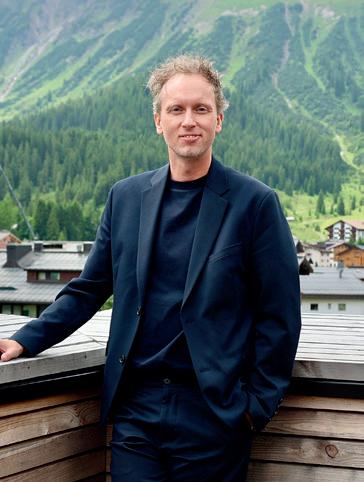
„Was uns verbindet, ist mehr als Geschichte – es ist Haltung“
Das Walsertreffen ist für mich keine Rückschau, sondern ein Spiegel: Es zeigt, wer wir heute sind, weil es erinnert, woher wir kommen.
Lech wurde vor rund 700 Jahren von Walserinnen und Walsern besiedelt – von Menschen, die sich aufgemacht haben, um einen neuen Lebensraum zu gestalten. Ihr Erbe ist kein fertiges Bild, sondern ein lebendiger Prozess. Es zeigt sich nicht nur in der Walsertracht, die wir mit Stolz tragen, sondern in einem inneren Kompass: Verantwortung, Gemeinschaft, Würde.
Als wir 1995 das Walsertreffen in Lech ausrichten durften, war ich tief berührt von der Kraft, die in dieser Gemeinschaft liegt. Heute, 2025, erlebe ich das erneut – in einer Zeit, die Gemeinschaft mehr denn je braucht.
Mein Dank gilt allen, die mitgetragen haben: Der Gemeinde mit Bürgermeister Gerhard Lucian, der Lech Zürs Tourismus rund um Philipp Scholz und Andrea Ruckendorfer, den vielen Ehrenamtlichen – von der Trachtenkapelle über die Feuerwehr bis zur Musikschule und den Gastgeberinnen und Gastgebern in Küche und Haus.
Es ist ein Fest, ja – aber mehr noch: ein Bekenntnis zur Haltung, die uns über Berge und Zeiten hinweg verbindet.
‘What connects us is more than history - it‘s attitude’
For me, the Walser Meeting is not a retrospective, but a mirror: it shows who we are today because it reminds us where we come from. Lech was settled by Walser people around 700 years ago - people who set out to create a new living space. Their legacy is not a finished image, but a living process. It is reflected not only in the Walser costume, which we wear with pride, but also in an inner compass: responsibility, community, dignity.
When we were able to organise the Walser Meeting in Lech in 1995, I was deeply touched by the strength that lies in this community. Today, in 2025, I am experiencing this again - at a time when community is needed more than ever.
I would like to thank all those who have contributed: The municipality with Mayor Gerhard Lucian, Lech Zürs Tourism around Philipp Scholz and Andrea Ruckendorfer, the many volunteers - from the traditional costume band to the fire brigade to the music school and the hosts in the kitchen and house.
It is a celebration, yes - but even more: a commitment to the attitude that unites us across mountains and times.
“Ciò che ci unisce non è solo la storia, è l‘atteggiamento”
Per me l‘Incontro Walser non è una retrospettiva, ma uno specchio: mostra chi siamo e ci ricorda da dove veniamo.
Lech è stata abitata dai Walser circa 700 anni fa, persone che hanno deciso di creare un nuovo spazio vitale. La loro eredità non è un‘immagine finita, ma un processo vivo. Si riflette non solo nel costume Walser, che indossiamo con orgoglio, ma anche in una bussola interiore: responsabilità, comunità, dignità.
Quando abbiamo potuto organizzare l‘incontro Walser a Lech nel 1995, sono stato profondamente toccato dalla forza che risiede in questa comunità. Oggi, nel 2025, ne faccio nuovamente esperienza, in un momento in cui la comunità è più che mai necessaria.
Vorrei ringraziare tutti coloro che hanno contribuito: Il Comune con il sindaco Gerhard Lucian, Lech Zürs Tourism intorno a Philipp Scholz e Andrea Ruckendorfer, i tanti volontari - dalla banda tradizionale ai vigili del fuoco, alla scuola di musica, ai padroni di casa in cucina e in casa.
È una festa, sì, ma ancora di più: la conferma dell‘ atteggiamento che ci unisce attraverso le montagne e i tempi.

LUDWIG MUXEL
OK-Chef Walsertreffen & Altbürgermeister von Lech
Organising committee head of the Walser Meeting & former mayor of Lech Responsabile del comitato organizzativo dell‘Incontro Walser ed ex sindaco di Lech

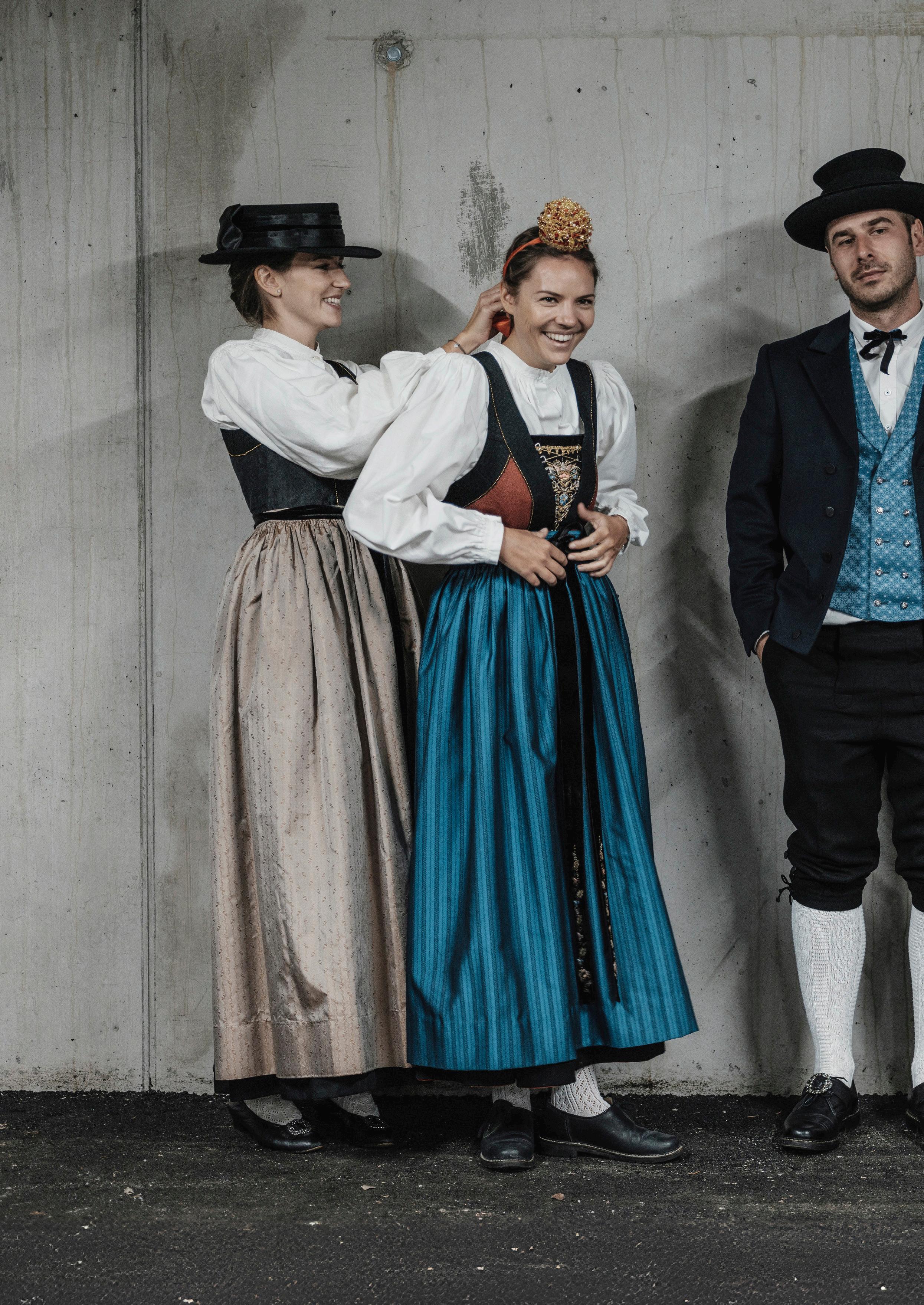

Freitag / Friday / Venerdì
18.07.2025
17.00 Uhr / 5 pm / ore 17.00
Begrüßung durch den Bürgermeister & Aperitif
Mayor‘s welcome & aperitif / Saluti di apertura del sindaco e aperitivo Lechwelten
im Anschluss / afterwards / a seguire
Individuelles Abendessen in der Dorfgastronomie
Individual dinners in the village restaurants / Cena individuale nei ristoranti locali Lech Zürs
Samstag / Saturday / Sabato
19.07.2025
10.00 Uhr / 10 am / ore 10:00
Generalversammlung Internationale Vereinigung für Walsertum
General Assembly International Association for Walserism / Assemblea generale dell’Associazione internazionale per la cultura walser Lechwelten
18.00 Uhr / 6 pm / ore 18:00
Eröffnung des Festzelts und gemeinsames Abendessen
Opening of the marquee and dinner together / Apertura del tendone e cena comune
Schlosskopfparkplatz, Lech
Sonntag / Sunday / Domenica
20.07.2025
09.00 Uhr / 9 am / ore 09:00 Gottesdienst
Church service / Santa Messa Pfarrkirche Lech
11.00 Uhr / 11 am / ore 11:00
Offizielle Parade des Walsertreffens
Official parade of the Walser Meeting / Sfilata ufficiale del Walsertreffen Lech Zürs
im Anschluss / afterwards / a seguire
Mittagessen im Festzelt
Lunch in the marquee / Pranzo sotto il tendone Schlosskopfparkplatz, Lech

Erleben Sie Lech Zürs in seiner ganzen Pracht – das Walsertreffen begeistert mit einem vielfältigen Rahmenprogramm und gelebter Walsertradition
Experience Lech Zürs in all its splendor – the Walsertreffen captivates with a diverse program and living Walser traditions. Scoprite Lech Zürs in tutto il suo splendore – l’incontro dei Walser entusiasma con un ricco programma e tradizioni walser ancora vive.
• Besuch Walsersiedlung Bürstegg / Visit to the Walser settlement Bürstegg / Visita all’insediamento walser di Bürstegg
• Besuch Huber Hus / Visit to the Huber Hus/ Visita alla casa Huber Hus
• Führung Zuger Säge / Guided tour of the Zug sawmill / Visita guidata alla segheria di Zug
• Bühne am Rüfiplatz / Stage at Rüfiplatz / Palco sulla piazza Rüfiplatz
• Geführte Wanderungen / Guided hikes / Escursioni guidate
• Führung Skyspace / Guided tour of the Skyspace / Visita guidata allo Skyspace
• Führung Pfarrkirche St. Nikolaus / Guided tour of St. Nicholas parish church / Visita guidata alla chiesa parrocchiale di San Nicolò
• Dorfrundgänge / Village tours / Visite guidate del paese
• Lesung / Reading / Lettura
Weitere Details und zur Anmeldung unter:
Further details and to sign in: / Ulteriori dettagli e iscrizione su:




the plan il piano
ZÜRS

BergbahnLech–Oberlech
LECHWELTEN
DORFHUS

Tiefgarage Anger


RÜFIPLATZ
Rüfikopfbahn1
Rüfikopfbahn2
Schlosskopf
HUBER-HUS



Arzt & Apotheke
Doctor & Pharmacy / Medico e farmacia
Pfarrkirche Lech
Parish church Lech / Chiesa parrocchiale di Lech
Öff entliche Toiletten
Public toilets / Bagni pubblici
Einkaufsmöglichkeiten
Shopping facilities / Strutture commerciali
Geldautomat
Cash machine / Bancomat
Bushaltestelle
Bus stop / Fermata dell‘autobus
Bergbahn
Cable car / Funivia
Tiefgarage
Underground garage / Parcheggio sotterraneo
Festumzug
Parade / Sfilata
Festzelt
Marquee / Tendone

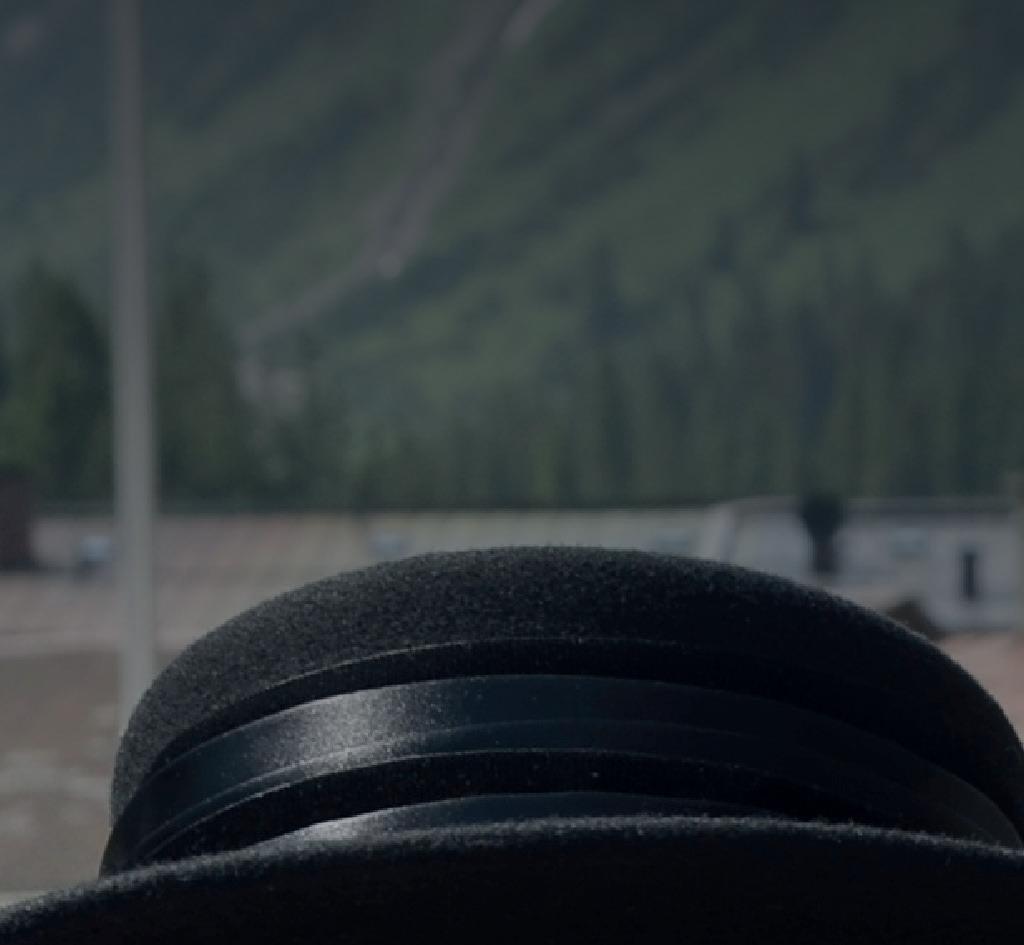



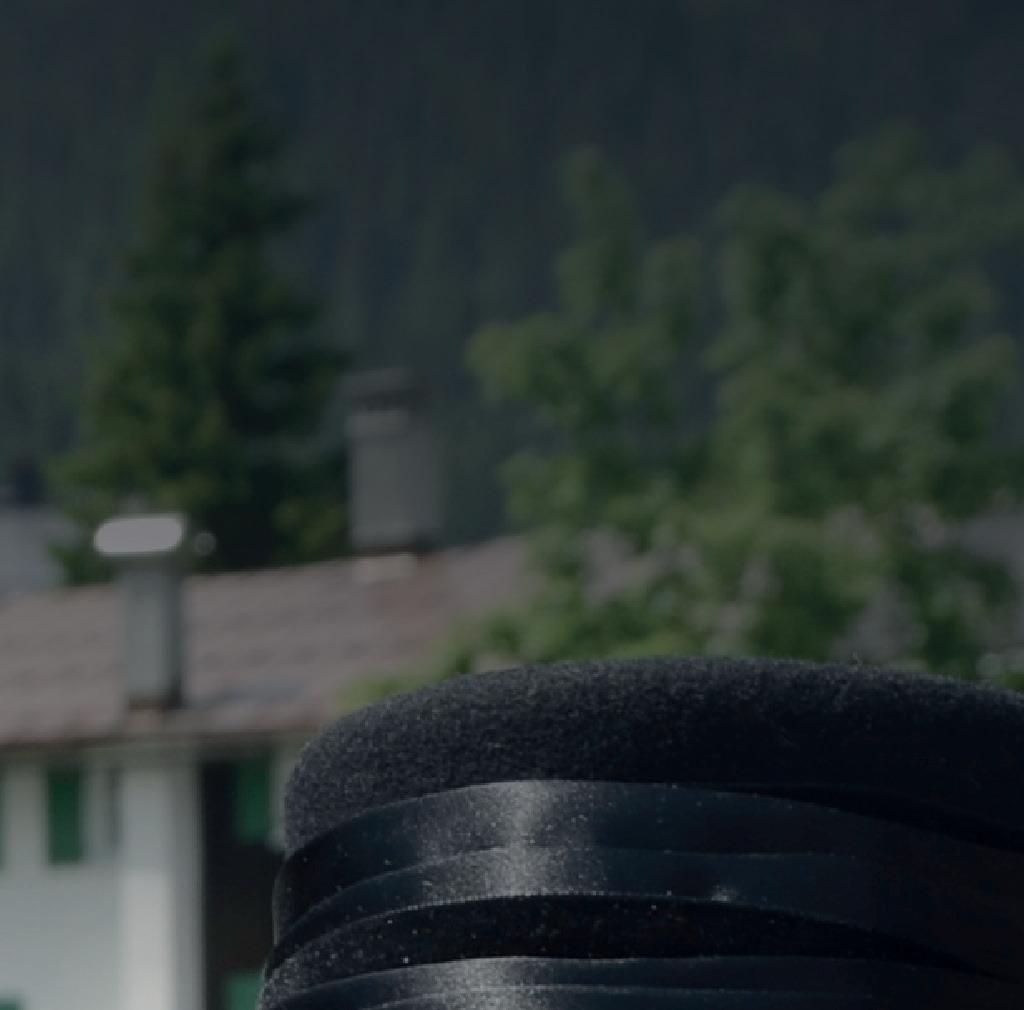

the Retrospective una Retrospettiva



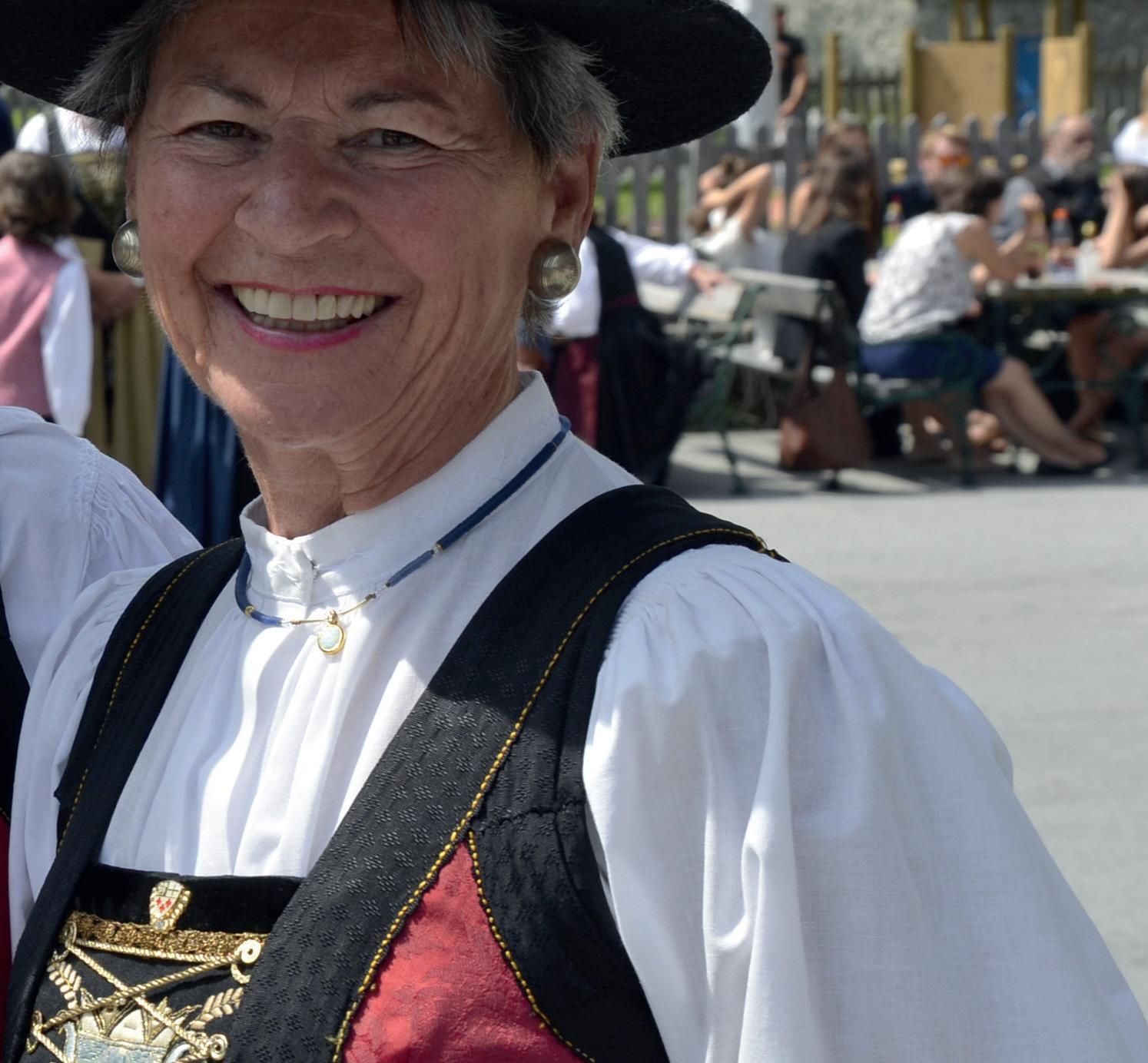
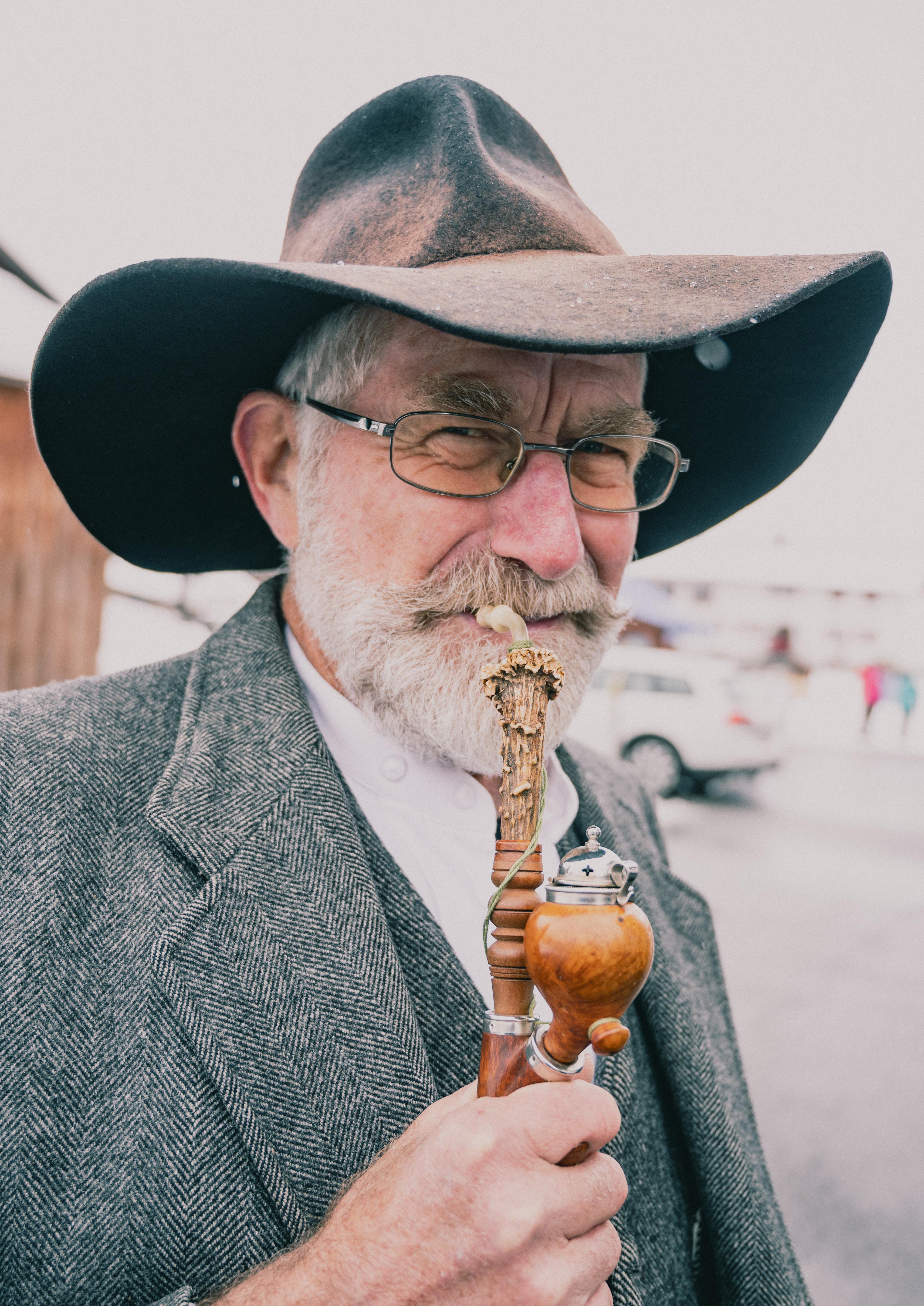
Wir erinnern uns mit großer Freude an das 12. Internationale Walsertreffen, das vom 1. bis 3. September 1995 bei uns in Lech stattfand. Über 1500 Gäste aus 19 Walsergemeinden folgten der Einladung, um gemeinsam unsere Wurzeln, unsere Sprache und unsere Traditionen zu feiern.
Unvergesslich bleibt das Wetter: Es schneite an allen drei Tagen – ein seltenes Bild für Anfang September. Die weißen Flocken verliehen den Trachtenumzügen, Alphornklängen und Gottesdiensten eine beinahe märchenhafte Atmosphäre. Viele sagten damals: „So festlich wirken unsere Trachten nur im Schnee.“
Das Fest wurde in enger Zusammenarbeit mit der Internationalen Walservereinigung und der frisch gegründeten Vorarlberger Walservereinigung organisiert. Podiumsdiskussionen, Kulturbeiträge, ein großer Festumzug und das gesellige Beisammensein machten dieses Treffen zu einem besonderen Höhepunkt in der Geschichte der Walserbewegung. Das Walsertreffen 1995 hat nicht nur unsere Verbundenheit gestärkt, sondern auch gezeigt, wie lebendig unsere Kultur ist – selbst bei Schneefall im Spätsommer. Wir blicken mit Stolz zurück und freuen uns auf die kommenden Begegnungen.
We fondly remember with great pleasure the 12th International Walser Meeting, which took place in Lech from 1 to 3 September 1995. Over 1500 guests from 19 Walser communities accepted the invitation to celebrate our roots, our language and our traditions together. The weather was unforgettable: it snowed on all three days - a rare sight for the beginning of September. The white flakes lent the traditional costume processions, alphorn music and church services an almost fairytale atmosphere. Many people said at the time: ‘Our traditional costumes only look so festive in the snow.’
The festival was organised in close cooperation with the International Walser Association and the newly founded Vorarlberg Walser Association. Panel discussions, cultural contributions, a large parade and convivial gatherings made this meeting a special highlight in the history of the Walser movement.
The Walser Meeting 1995 not only strengthened our bond, but also showed how lively our culture is - even when it snows in late summer. We look back with pride and look forward to future encounters.
Ricordiamo con grande piacere il 12° Incontro Internazionale Walser, che si è svolto a Lech dall‘1 al 3 settembre 1995. Oltre 1500 ospiti provenienti da 19 comunità walser hanno accettato l‘invito a celebrare insieme le nostre radici, la nostra lingua e le nostre tradizioni. La situazione meteorologica è rimasta nei nostri ricordi: allora aveva nevicato per tutti e tre i giorni - uno spettacolo raro per l‘inizio di settembre. I fiocchi bianchi avevano conferito alle tradizionali processioni in costume, alla musica degli alphorn e alle funzioni religiose un‘atmosfera quasi fiabesca. Molti avevano detto in quell‘occasione: “I nostri costumi tradizionali sono così festosi solo con la neve”. Il festival è stato organizzato in stretta collaborazione con l‘Associazione Internazionale Walser e l’Associazione Walser del Vorarlberg appena fondata. Discussioni, contributi culturali, una grande sfilata e momenti di socializzazione hanno reso questo incontro un momento speciale nella storia del movimento walser.
Il Walser Meeting 1995 non solo ha rafforzato il nostro legame, ma ha anche dimostrato quanto sia vivace la nostra cultura, anche quando nevica a fine estate. Guardiamo al passato con orgoglio e ci rallegriamo per gli incontri futuri.
Schnee, Spiele und starke Gemeinschaft
Fast 30 Jahre nach dem legendären Walsertreffen 1995 hat sich die Geschichte wiederholt: Auch bei den Walserspielen 2024 im September fiel in Lech überraschend Schnee. Die weiße Kulisse sorgte für Staunen und Begeisterung – und verlieh den Spielen eine ganz besondere Atmosphäre.
Trotz (oder gerade wegen) der winterlichen Bedingungen fanden die traditionellen Wettbewerbe mit großer Begeisterung statt. Ob beim „Tschärättu, Mischlu, Pottschäru oder Holzu,“ – Geschicklichkeit, Teamgeist und viel Humor standen im Mittelpunkt. Die Teilnehmerinnen und Teilnehmer kamen aus zahlreichen Walsergemeinden, und auch viele junge Gesichter waren mit vollem Einsatz dabei.
Abgerundet wurden die Walserspiele durch kulinarische Köstlichkeiten aus der Region und ein geselliges Miteinander am Abend in den Lechwelten, das selbst der Schnee nicht trüben konnte. Abends erzählte man Geschichten – und lachte über eingefrorene Schuhe und nasse Hosen.
Die Walserspiele 2024 haben eindrucksvoll gezeigt: Unsere Gemeinschaft ist wetterfest, traditionsverbunden und lebendig. Wir freuen uns schon jetzt auf das nächste Kapitel unserer gemeinsamen Geschichte – egal bei welchem Wetter!
Snow, games and a strong community
Almost 30 years after the legendary Walser Games in 1995, history has repeated itself: Snow also fell unexpectedly in Lech at the Walser Games 2024 in September. The white backdrop caused amazement and enthusiasm - and gave the games a truly unique atmosphere.
Despite (or perhaps because of) the wintry conditions, the traditional competitions took place with great enthusiasm. Whether in the ‘Tschärättu, Mischlu, Pottschäru or Holzu,’ the focus was on skill, team spirit and plenty of humour. The participants came from numerous Walser communities, and many young faces also took part with full commitment.
The Walser games were rounded off with culinary delicacies from the region and a sociable get-together in the evening in the Lechwelten, which even the snow couldn‘t spoil. In the evenings, people told stories - and laughed about frozen shoes and wet trousers.
The Walser Games 2024 impressively demonstrated that our community is weatherproof, traditional and lively. We are already looking forward to the next chapter in our shared history - whatever the weather!
Neve, giochi e una forte comunità
Quasi 30 anni dopo i leggendari Giochi Walser del 1995, la storia si è ripetuta: La neve è scesa inaspettatamente anche a Lech in occasione dei Giochi Walser 2024 a settembre. Lo sfondo bianco ha suscitato stupore ed entusiasmo e ha conferito ai giochi un‘atmosfera molto speciale.
Nonostante (o forse proprio a causa) delle condizioni invernali, le gare tradizionali si sono svolte con grande entusiasmo. Che si tratti di “Tschärättu, Mischlu, Pottschäru o Holzu”, l‘attenzione si è concentrata sull‘abilità, sullo spirito di squadra e su tanto umorismo. I partecipanti provenivano da numerose comunità walser e anche molti giovani hanno partecipato con grande impegno.
I giochi walser sono stati completati da prelibatezze culinarie della regione e da un incontro conviviale la sera nelle Lechwelten, che nemmeno la neve è riuscita a rovinare. La sera si raccontavano storie e si rideva di scarpe ghiacciate e pantaloni bagnati.
I Giochi Walser 2024 hanno dimostrato in modo impressionante che la nostra comunità è resistente alle intemperie, tradizionale e vivace.
Siamo già proiettati verso il prossimo capitolo della nostra storia comune, con qualsiasi tempo!

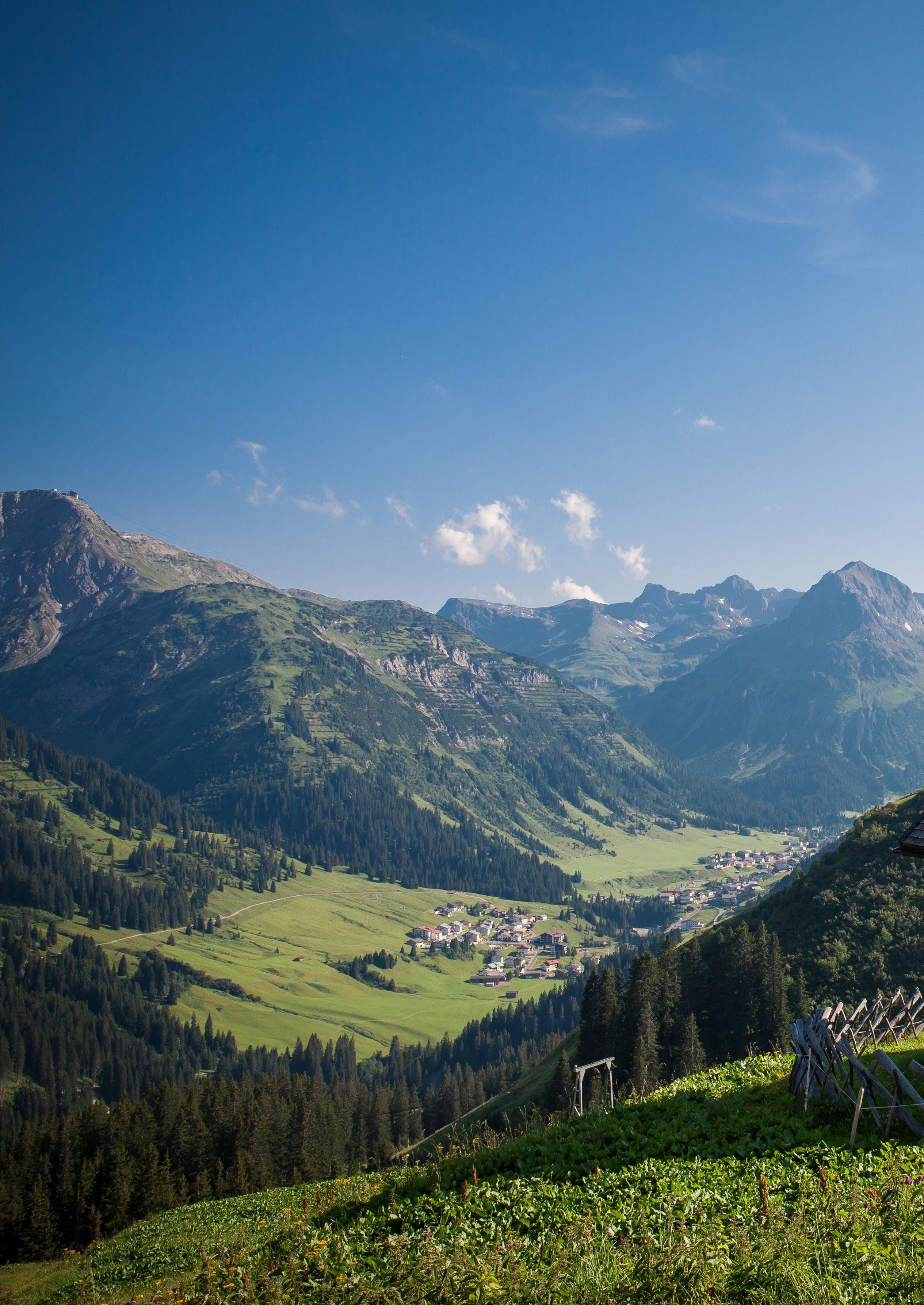
the Walser village Bürstegg
il villaggio Walser di Bürstegg

Hoch über Lech, auf 1.719 m Seehöhe, befindet sich Bürstegg – die höchstgelegene Walsersiedlung in Vorarlberg. Bereits um 1300 besiedelten die Walser das Hochplateau, errichteten Höfe und eigenständige Kulturlandschaften in bemerkenswerter Höhe. Ein markantes Zeugnis der Gemeinschaft ist die Expositurkirche St. Martin, die 1695 über Bürstegg errichtet wurde und bis ins 18. Jahrhundert aktiv genutzt war. Ihr barocker Altar, Statuen und Tafelgemälde verleihen dem Kirchlein bis heute spirituelle und historische Bedeutung – ein kulturelles Zentrum über Jahrhunderte hinweg. Architektonisch spiegeln die erhaltenen Walserbauten die harte Realität des Lebens im Gebirge: robuste Holz- und Steinbauweise, dicke Mauern, kleine Fenster und Stallungen direkt im Hauskern – optimal angepasst an Klima und Geländebedingungen. Der letzte Hof wurde 1895 aufgegeben, spätestens um 1898 war Bürstegg nach Jahrhunderten der Nutzung eine reine Sommeralp. Heute stehen die verbliebenen Gebäude Bürstegg unter Denkmalschutz und Bürstegg ist ein beliebtes Ziel für Wanderer. Der Weg, oft entlang des historischen Walserwegs, führt durch eine eindrucksvolle Kulturlandschaft. Besucher:innen erleben eine Kombination aus archaischer Stille, alpiner Natur und historischer Tiefe. Bürstegg ist kein stilles Freilichtmuseum – es ist ein Ort historischer Substanz, an dem sich Walsergeschichte, Baukultur und Alppraxis authentisch verbinden.
High above Lech, at 1,719 metres above sea level, lies Bürstegg - the highest Walser settlement in Vorarlberg. The Walsers settled on the high plateau as early as 1300, establishing farms and independent cultural landscapes at a remarkable altitude. A striking testimony to the community is the Expositurkirche St Martin, which was built above Bürstegg in 1695 and was actively used until the 18th century. Its baroque altar, statues and panel paintings lend the little church spiritual and historical significance to this day - a cultural centre for centuries.
Architecturally, the preserved Walser buildings reflect the harsh reality of life in the mountains: robust timber and stone construction, thick walls, small windows and stables right in the centre of the house - optimally adapted to the climate and terrain conditions. The last farm was abandoned in 1895 and by 1898 at the latest, Bürstegg had become a summer alp after centuries of use. Today, the remaining Bürstegg buildings are listed buildings and Bürstegg is a popular destination for hikers. The trail, often along the historic Walserweg, leads through an impressive cultural landscape. Visitors experience a combination of archaic tranquillity, alpine nature and historical depth. Bürstegg is not a silent open-air museum - it is a place of historical substance, where Walser history, building culture and alpine practice are authentically combined.
Sopra Lech, a 1.719 metri sul livello del mare, si trova Bürstegg, il più alto insediamento Walser del Vorarlberg. I Walser si insediarono sull‘altopiano già nel 1300, creando fattorie e paesaggi culturali indipendenti a un‘altitudine notevole. Un‘impressionante testimonianza della comunità è la chiesetta “Expositurkirche St Martin”, costruita sopra Bürstegg nel 1695 e utilizzata attivamente fino al XVIII secolo. L‘altare barocco, le statue e i dipinti su tavola conferiscono alla chiesetta un significato spirituale e storico ancora oggi: un centro culturale per secoli.
Dal punto di vista architettonico, gli edifici Walser conservati riflettono la dura realtà della vita in montagna: robusta costruzione in legno e pietra, muri spessi, piccole finestre e stalle proprio al centro della casa - adattate in modo ottimale alle condizioni climatiche e del terreno. L‘ultima fattoria fu abbandonata nel 1895 e, al più tardi nel 1898, Bürstegg era diventata una malga estiva dopo secoli di utilizzo. Oggi Bürstegg è sotto tutela storica e una meta estiva molto popolare per gli escursionisti. Il sentiero, lungo lo storico Walserweg, conduce attraverso un impressionante paesaggio culturale. I visitatori sperimentano una combinazione di tranquillità arcaica, natura alpina e profondità storica. Bürstegg non è un silenzioso museo all‘aperto: è un luogo di sostanza storica, dove la storia dei Walser, la cultura edilizia e la pratica alpina si fondono autenticamente.



the world gourmet village il villaggio gastronomico più premiato

Lech Zürs am Arlberg steht nicht nur für alpine Schönheit und exklusive Gastlichkeit, sondern auch für kulinarische Exzellenz. Der Ort gilt als Weltgourmetdorf – und das mit gutem Grund: Gemessen an der Einwohnerzahl hat Lech Zürs die höchste Haubendichte der Welt. In 20 Restaurants werden 56 Gault-Millau-Hauben gezählt, dazu kommen gleich zwei 2-Sterne-Restaurants, die vom Guide Michelin ausgezeichnet wurden.
Die Dichte an Gault-Millau-Hauben und Michelin-Sternen ist bemerkenswert – ein Zeichen für die außergewöhnliche Küchenkunst, die hier Tag für Tag gelebt wird. Von international gefeierten Spitzenköch:innen bis zu kreativen Newcomern zelebrieren die Küchenchefs in Lech Zürs regionale Produkte, alpine Aromen und internationale Raffinesse auf höchstem Niveau.
Besonders geschätzt wird die gelungene Balance aus gehobener Kulinarik und alpiner Bodenständigkeit: Edle Menüs mit Wild, Bergkräutern, frischem Fisch aus dem Lech oder regionalem Käse treffen auf herzliche Gastfreundschaft und ein Ambiente, das zwischen eleganter Zurückhaltung und alpiner Wärme changiert. Dabei ist Gourmetkultur in Lech Zürs mehr als ein Tellergericht – sie ist ein Lebensgefühl. Ob im traditionsreichen Hotelrestaurant, im modernen Fine-DiningLokal oder in einer charmanten Hütte mit überraschendem Anspruch: Überall wird mit Liebe zum Detail gekocht und serviert. Gäste erwartet ein kulinarischer Bogen, der vom Frühstück mit hausgemachten Spezialitäten bis zum mehrgängigen Abendmenü auf Sterne-Niveau reicht.
Lech Zürs am Arlberg not only stands for alpine beauty and exclusive hospitality, but also for culinary excellence. The village is considered a world gourmet village - and with good reason: measured by the number of inhabitants, Lech Zürs boasts the highest density of awardwinning restaurants in the world relative to its population. There are 56 Gault Millau toques in 20 restaurants, plus two restaurants that each hold two Michelin stars..
The density of Gault Millau toques and Michelin stars is remarkable - a sign of the exceptional culinary art that is practised here every day. From internationally acclaimed top chefs to creative newcomers, the chefs in Lech Zürs celebrate regional products, alpine flavours and international sophistication at the highest level.
The successful balance of sophisticated cuisine and alpine down-to-earthness is particularly appreciated: exquisite menus with game, mountain herbs, fresh fish from Lech or regional cheese meet warm hospitality and an ambience that balances between elegant restraint and alpine warmth. Gourmet culture in Lech Zürs is more than just a dish on a plate - it is a way of life. Whether in the traditional hotel restaurant, the modern fine dining restaurant or in a charming hut with surprising sophistication: everywhere is cooked and served with attention to detail. Guests can expect a culinary experience that ranges from breakfast with homemade specialities to a multi-course dinner menu at star level.
Lech Zürs am Arlberg non è solo sinonimo di bellezza alpina e ospitalità esclusiva, ma anche di eccellenza culinaria. Il villaggio è considerato un villaggio gourmet a livello mondiale, e a ragione: in base al numero di abitanti, Lech Zürs ha la più alta densità di ristorante premiati al mondo. Ci sono 56 toques Gault Millau in 20 ristoranti, oltre a due ristoranti con due stelle Michelin ciascuno. La densità di toques Gault Millau e di stelle Michelin è notevole, segno dell‘eccezionale arte culinaria che viene praticata qui giorno dopo giorno. Dai top chef di fama internazionale ai nuovi creativi, gli chef di Lech Zürs celebrano i prodotti regionali, i sapori alpini e la raffinatezza internazionale ai massimi livelli. L‘equilibrio riuscito tra cucina sofisticata e semplicità alpina è particolarmente apprezzato: squisiti menu a base di selvaggina, erbe di montagna, pesce fresco di Lech o formaggi regionali incontrano una calda ospitalità e un ambiente che alterna elegante sobrietà e calore alpino. La cultura gastronomica a Lech Zürs è più di un semplice piatto: è uno stile di vita. Che si tratti del tradizionale ristorante dell‘hotel, del moderno ristorante di cucina raffinata o di un‘incantevole baita dalla sorprendente raffinatezza, tutto è cucinato e servito con attenzione ai dettagli. Gli ospiti possono aspettarsi un‘esperienza culinaria che spazia dalla colazione con specialità fatte in casa a una cena con menu a più portate di livello gourmet.

the Summer in Lech Zürs
L’estate a Lech Zürs

Wer Lech Zürs nur im Winter kennt, verpasst die vielleicht schönste Jahreszeit: den Sommer. Zwischen blühenden Bergwiesen, klarer Gipfelluft und herzlicher Gastfreundschaft öffnet sich eine Welt der Erholung und Inspiration.
Wandern mit Weitblick: Ob Höhenweg, Flusstal oder Themenpfad – in Lech Zürs verbindet jede Wanderung Naturgenuss mit persönlicher Entschleunigung. Der Grüne Ring erzählt moderne Sagen, der Lechweg folgt dem Wasserlauf, und der Arlberg Trail verbindet fünf Orte zu einem alpinen Abenteuer.
Genuss am Wegesrand: Hütten wie die Trittalpe oder die Balmalp laden zur Einkehr ein – mit ehrlicher, regionaler Küche. Auch abseits der Wege begeistert die Natur: Der 9-Loch-Golfplatz im Zugertal und das beheizte Waldschwimmbad mit Rutsche und Panoramablick bieten Freizeitgenuss für alle.
Lech Card – mehr erleben: Mit der Lech Card genießen Gäste Zugang zu Bergbahnen, geführten Wanderungen, dem Schwimmbad, dem Wanderbus und vielen weiteren Angeboten – schon ab einer Übernachtung.
Kunst am Berg – Skyspace-Lech: Der Skyspace-Lech von James Turrell ist ein begehbares Lichtkunstwerk – besonders eindrucksvoll bei Sonnenauf- und -untergang. Ein stiller Ort der Kontemplation hoch über dem Tal.
Sommer in Lech Zürs – ein besonderes Erlebnis zwischen Himmel und Erde.
Anyone who only knows Lech Zürs in winter is missing out on perhaps the most beautiful season of the year: summer. A world of relaxation and inspiration opens up between blooming mountain meadows, clear summit air and warm hospitality.
Hiking with a view: Whether a high-altitude trail, river valley or themed trail - in Lech Zürs, every hike combines enjoyment of nature with personal relaxation. Der Grüne Ring tells modern legends, the Lechweg follows the watercourse and the Arlberg Trail connects five places to create an alpine adventure.
Enjoyment along the way: Huts such as the Trittalpe or the Balmalp invite you to stop for a bite to eat - with honest, regional cuisine. The 9-hole golf course in Zugertal and the heated forest swimming pool with slide and panoramic views offer recreational enjoyment for everyone.
Lech Card - experience more: With the Lech Card, guests enjoy access to mountain railroads, guided hikes, the swimming pool, the hiking bus and many other offers - from just one overnight stay.
Art on the mountain - Skyspace-Lech: The Skyspace-Lech by James Turrell is a walk-in work of light installation - particularly impressive at sunrise and sunset. A quiet place of contemplation high above the valley.
Summer in Lech Zürs - a special experience between heaven and earth.
sentire la natura, trovare pace e tranquillità,
Chi conosce Lech Zürs solo in inverno si perde la stagione forse più bella dell‘anno: l‘estate. Un mondo di relax e ispirazione si apre tra prati di montagna in fiore, aria limpida delle vette e calda ospitalità.
Escursioni con vista: Che si tratti di un sentiero d‘alta quota, di una valle fluviale o di un sentiero tematico, a Lech Zürs ogni escursione unisce il piacere della natura alla decelerazione personale. Der Grüne Ring racconta leggende moderne, il Lechweg segue il corso d‘acqua e il Arlberg Trail collega cinque luoghi per creare un‘avventura alpina.
Divertimento lungo il percorso: Numerosi rifugi invitano a fermarsi per un boccone, dalla rustica Trittalpe alla Balmalp, dall‘architettura imponente, Servono ciò che la regione ha da offrire, in modo semplice, creativo e sempre onesto. La natura è protagonista anche lontano dai sentieri escursionistici: il campo da golf a 9 buche della valle “Zugertal”, la piscina riscaldata ai margini del bosco, con scivolo, isola rocciosa e vista sul cielo, offrono divertimento per tutti.
Lech Card - libertà per gli esploratori: La Lech Card offre l‘accesso agli impianti di risalita estivi, alle escursioni guidate, alla piscina nel bosco, al bus escursionistico, ai musei e a numerose esperienze per grandi e piccini – aquistabile a partire da un solo pernottamento. Arte in montagna - Skyspace-Lech: Skyspace-Lech, progettato dall‘artista americano James Turrell, è un‘opera d‘arte che unisce luce, paesaggio e cielo in modo unico, soprattutto all‘alba e al tramonto. Skyspace non è un classico spazio espositivo: è un‘esperienza.
Estate a Lech Zürs - un‘esperienza speciale tra cielo e terra.



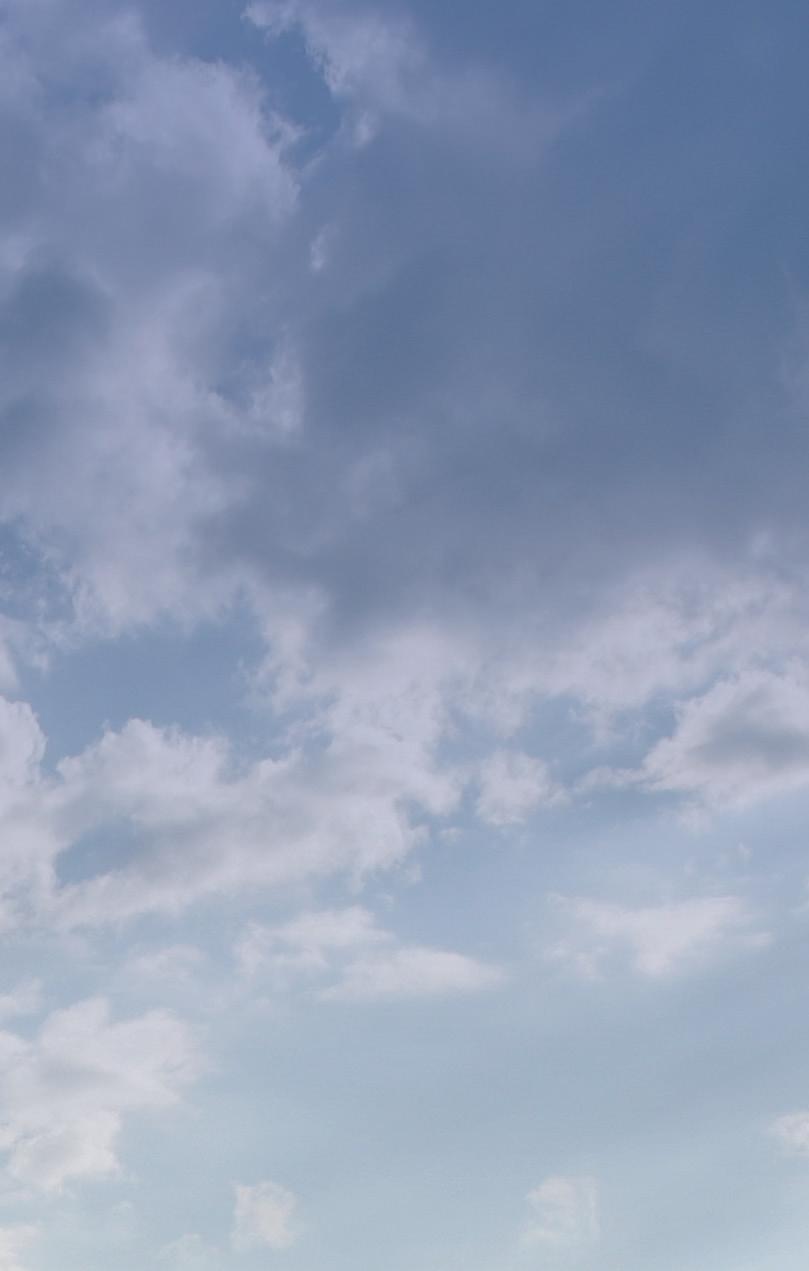










Kaufmann family in Zug
Famiglia Kaufmann a Zug




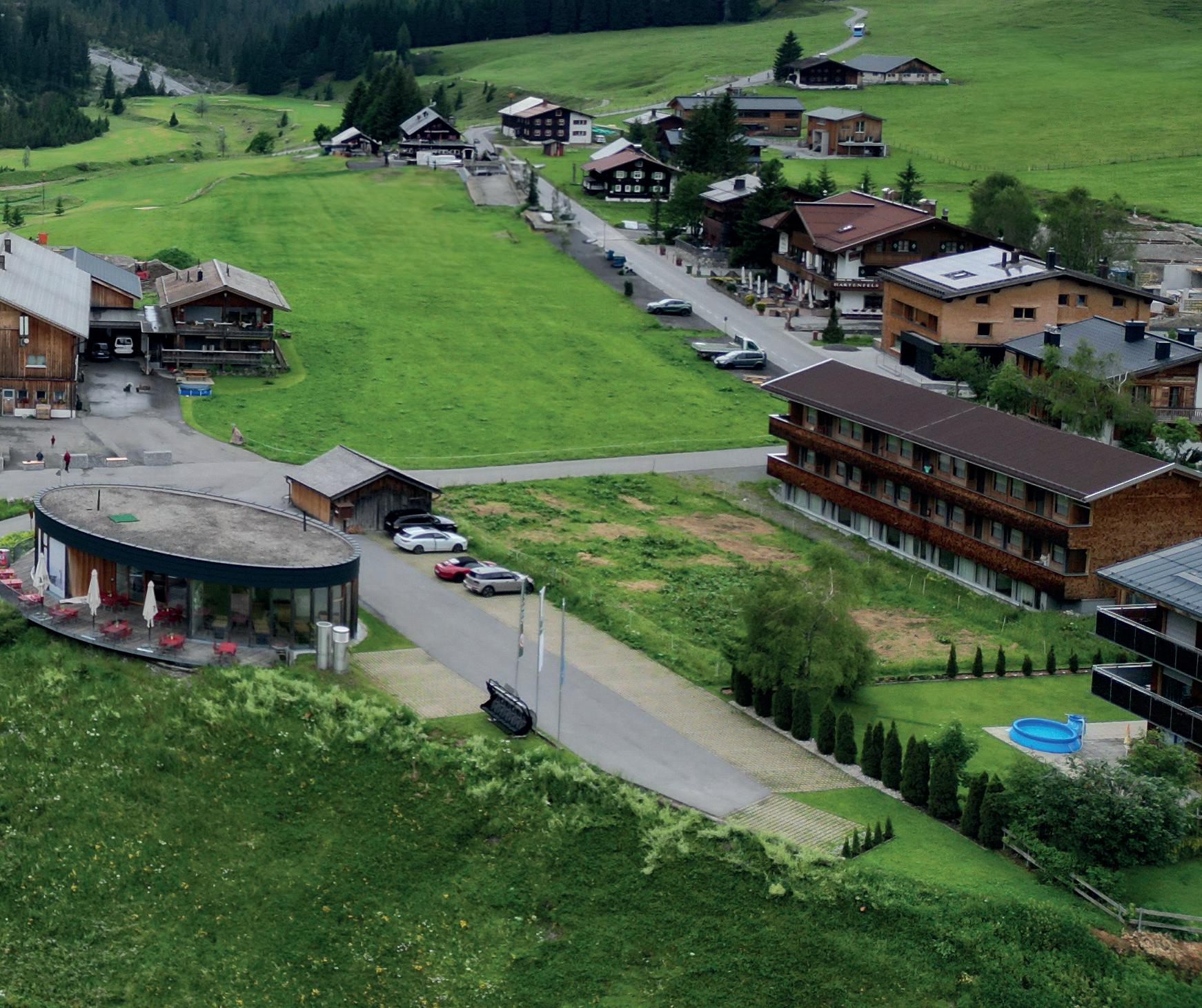

Im Herzen des Lecher Ortsteils Zug lebt die Familie Kaufmann eine Landwirtschaft, die gleichzeitig verwurzelt und zukunftsgewandt ist. Auf ihrem Bio-Rinderhof verbinden sie traditionelle Kreisläufe mit innovativen Ideen – und begeistern damit Gäste wie Einheimische gleichermaßen.
„Alles, was am Hof geboren ist oder entsteht, das bleibt am Hof“, sagt Annemarie Kaufmann. Der Leitsatz der Seniorchefin beschreibt die Philosophie der Familie: Ein geschlossener Kreislauf, in dem Tiere artgerecht gehalten, respektvoll behandelt und ihre Produkte direkt am Hof vermarktet werden. Ob frische Milch, Käse oder Fleisch – alles stammt aus eigener, nachhaltiger Produktion. Rund 20 Milchkühe, Jungvieh und Hühner leben ganzjährig auf weitläufigen Weiden oder im geschützten Stall. Besonders stolz ist die Familie auf ihre neue Zuger Sennstube – eine moderne Schau-Sennerei, die Einblicke in die Milchverarbeitung gewährt. Durch eine große Glasscheibe können Besucher:innen zuschauen, wie Bio-Heumilch zu Butter, Joghurt oder Käse wird. Ein liebevoll gestalteter Hofladen bietet regionale Produkte, täglich frisch. Dabei bleibt der Hof nicht stehen. Neu seit Sommer ist homogenisierte Milch, ideal für Kaffeemaschinen in der Gastronomie. Und ab Herbst/Winter 2025/26 ist ein Bio-Legehennenhof geplant: das „Önscher Bio-Ei vo Lech“. Die Kaufmanns zeigen eindrucksvoll, wie regionale Landwirtschaft auch in alpinen Regionen Zukunft haben kann – getragen von Respekt, Innovation und einem starken Miteinander in der Dorfgemeinschaft.
In the heart of the Zug district of Lech, the Kaufmann family runs a farm that is both rooted and forward-looking. On their organic cattle farm, they combine traditional cycles with innovative ideas - and inspire guests and locals alike.
“Everything that is born or created on the farm stays on the farm,” says Annemarie Kaufmann. The senior famer‘s guiding principle describes the family‘s philosophy in a nutshell: a closed cycle in which animals are kept in a species-appropriate manner, treated with respect and their products are marketed directly on the farm. Whether fresh milk, cheese or meat - everything comes from their own sustainable production. Around 20 dairy cows, young cattle and chickens live all year round on extensive pastures or in the sheltered barn. The family is particularly proud of their new Zuger Sennstube - a modern show dairy that provides an insight into milk processing. Through a large glass window, visitors can watch how organic hay milk is turned into butter, yogurt or cheese. A lovingly designed farm store offers regional products, fresh every day. The farm keeps evolving. New since the summer is homogenized milk, ideal for coffee machines in the catering trade. And from fall/winter 2025/26, an organic laying hen farm is planned: the “Önscher Bio-Ei vo Lech”.
La tradizione incontra l‘innovazione
Come un‘azienda familiare di Zug sta ripensando l‘agricoltura alpina
Nel cuore della frazione Zug, a Lech, la famiglia Kaufmann gestisce un‘azienda agricola che è allo stesso tempo profondamente radicata e orientata al futuro. Nel loro allevamento biologico di bestiame, combinano cicli tradizionali con idee innovative che entusiasmano ospiti e abitanti del luogo.
“Tutto ciò che nasce o viene creato nella fattoria rimane nella fattoria”, afferma Annemarie Kaufmann. Il principio guida della contadina senior descrive in poche parole la filosofia della famiglia: un ciclo chiuso in cui gli animali sono allevati in modo adeguato alla specie, trattati con rispetto e i loro prodotti sono commercializzati direttamente in fattoria. Che si tratti di latte fresco, formaggio o carne, tutto proviene dalla loro produzione sostenibile. Circa 20 mucche da latte, giovani bovini e polli vivono tutto l‘anno su ampi pascoli o nella stalla riparata. La famiglia è particolarmente orgogliosa della nuova “Zuger Sennstube”, un moderno caseificio a vista che offre una panoramica sulla lavorazione del latte. Attraverso un‘ampia vetrata, i visitatori possono osservare come il latte di fieno biologico viene trasformato in burro, yogurt o formaggio. Un negozio accurato, arredato con gusto e passione, offre prodotti regionali, freschi ogni giorno. La fattoria continua il suo sviluppo. Da quest‘estate introduce il latte omogeneizzato, ideale per le macchine da caffè della ristorazione. Inoltre, a partire dall‘autunno/inverno 2025/26, è previsto un allevamento biologico di galline per avere uova fresche della fattoria: l‘“Önscher Bio-Ei vo Lech”. La famiglia Kaufmann dimostra in modo impressionante come l‘agricoltura regionale può avere un futuro anche nelle regioni alpine - sulla base del rispetto, dell‘innovazione e della forte cooperazione nella comunità del villaggio.

the Oberlech tunnel system
il sistema di tunnel di Oberlech






1985 hatte Fridolin Lucian, Vater des heutigen Bürgermeisters Gerhard Lucian, die visionäre Idee, Verkehrslärm und Abgase aus Oberlech unter die Erde zu verlegen. Nach zwölf Jahren intensiver Gespräche mit Grundbesitzer:innen und Nachbar:innen begann 1997 der Bau des Tunnelsystems – in nur drei Jahren entstand im Tagbau ein 3,5 km langes, modernes Versorgungsnetz. Finanziert wurde das Projekt von den Betrieben im Bereich Burgplateau, unterstützt durch ein Darlehen der Gemeinde Lech. Seit den 2000er-Jahren sind fast alle Hotels und Häuser angeschlossen. Politisch erhielt das Projekt durch den damaligen Verkehrslandesrat Hubert Gorbach wesentliche Unterstützung und wurde österreichweit als Vorzeigeprojekt anerkannt. Der Tunnel bietet höchsten Komfort – für Gäste durch perfektes Ski-In/Ski-Out und eine trockene An- und Abreise, für Einheimische durch reduzierte Verkehrsbelastung und optimierte Logistik in der Hotellerie. Ausschließlich Elektrofahrzeuge sind zugelassen – ein klares Bekenntnis zur Nachhaltigkeit. Ein weiterer Meilenstein wurde 2023 mit der Fertigstellung der Zentrumsgarage Anger erreicht: Sie schafft eine direkte, wettergeschützte Verbindung zur Oberlecher Bergbahn. Was als mutige Idee begann, ist heute Sinnbild für vorausschauende Planung, Zusammenhalt und nachhaltige Tourismusentwicklung in Lech Zürs.
In 1985, Fridolin Lucian, father of the current mayor Gerhard Lucian, had the visionary idea of relocating traffic noise and exhaust fumes from Oberlech underground. After twelve years of intensive discussions with landowners and neighbors, construction of the tunnel system began in 1997 - in just three years, a 3.5 km long, modern supply network was created using open-cut construction. The project was financed by the businesses in the Burgplateau area, supported by a loan from the municipality of Lech. Since the 2000s, almost all hotels and houses have been connected. The project received significant political support from the then Transport Minister Hubert Gorbach and was recognized throughout Austria as a flagship project. The tunnel offers maximum comfort - for guests through perfect ski-in/ski-out and a dry arrival and departure, for locals through reduced traffic congestion and optimized logistics in the hotel industry. Only electric vehicles are permitted - a clear commitment to sustainability. Another milestone was reached in 2023 with the completion of the Anger center garage: it creates a direct, weather-protected connection to the Oberlech mountain railroad. What began as a bold idea is now a symbol of forward-looking planning, cohesion and sustainable tourism development in Lech Zürs.
Sviluppo del trasporto con spirito pionieristico - il sistema di tunnel di Oberlech Una pietra miliare per la sostenibilità, il comfort e la qualità della vita
Nel 1985 Fridolin Lucian, padre dell‘attuale sindaco Gerhard Lucian, ebbe l‘idea visionaria di trasferire nel sottosuolo di Oberlech il rumore del traffico e i gas di scarico. Dopo dodici anni di intensi colloqui con i proprietari terrieri e i vicini, nel 1997 è iniziata la costruzione del sistema di gallerie sotterranee a Oberlech: in soli tre anni è stata realizzata una moderna rete di distribuzione lunga 3,5 km. Il progetto è stato finanziato dagli esercizi ricettivi della frazione del “Burgplateau” a Oberlech, con il sostegno di un prestito del comune di Lech. Quasi tutti gli hotel e le case sono stati collegati a partire dagli anni 2000. Il progetto ha ricevuto un notevole sostegno politico da parte dell‘allora Ministro dei Trasporti Hubert Gorbach ed è stato riconosciuto in tutta l‘Austria come un progetto esemplare. Il tunnel offre il massimo comfort: agli ospiti grazie ad un perfetto ski-in/ski-out e a un arrivo e una partenza asciutti, agli abitanti del luogo grazie alla riduzione della congestione del traffico e all‘ottimizzazione della logistica nel settore alberghiero. Nei tunnel sono ammessi solo veicoli elettrici, un chiaro impegno per la sostenibilità. Un‘altra pietra miliare è stata raggiunta nel 2023 con il completamento del parcheggio del centro nella frazione Anger: esso crea un collegamento diretto e protetto dalle intemperie con la funivia Lech - Oberlech. Quella che era nata come un‘idea audace è ora un simbolo di pianificazione lungimirante, coesione e sviluppo turistico sostenibile a Lech Zürs.











the Huber-Hus in Lech la casa “Huber-Hus” a Lech










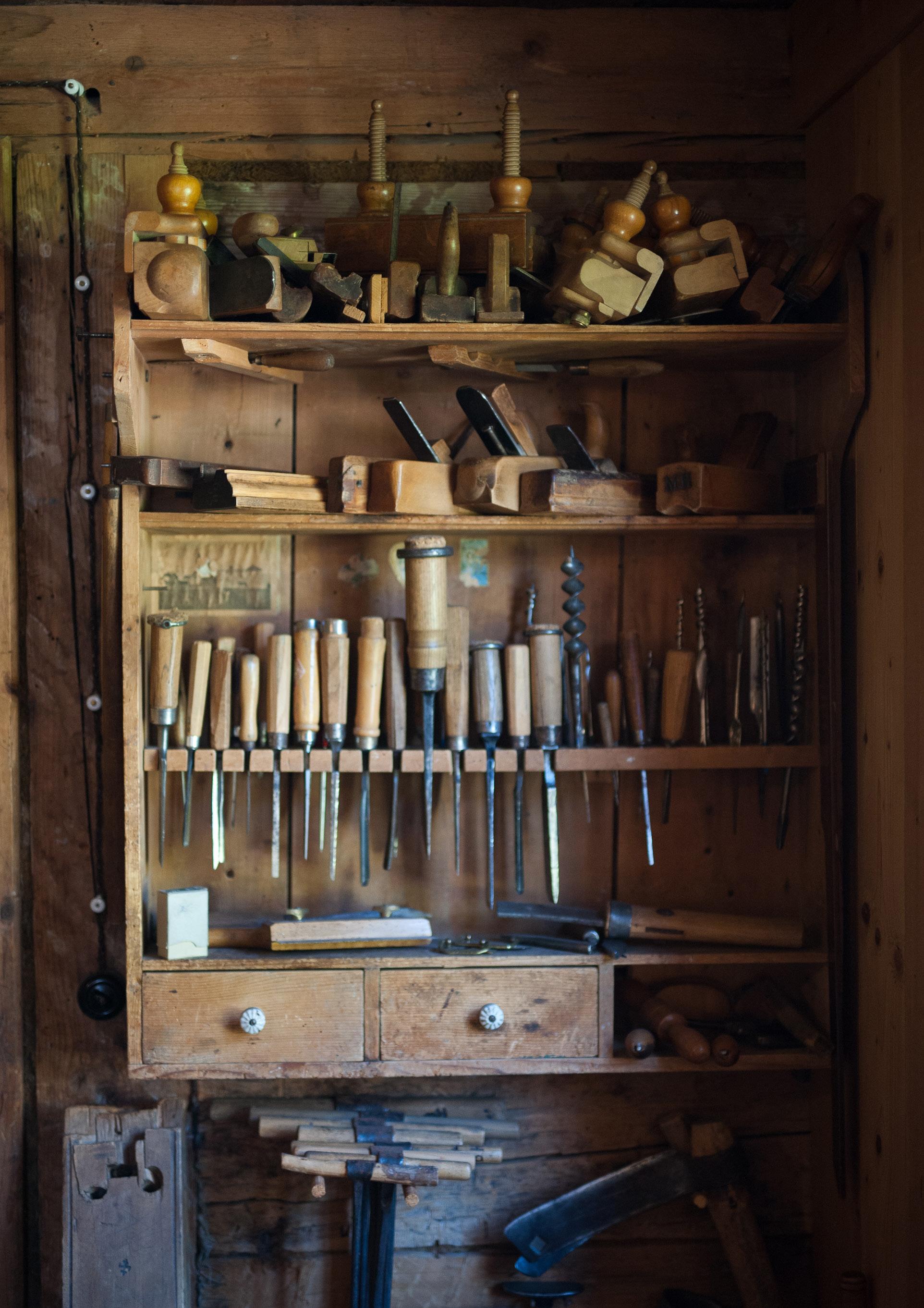
Mitten im Herzen von Lech am Arlberg steht ein besonderes Juwel alpiner Baukultur: das Huber-Hus. Dieses über 430 Jahre alte Walserhaus ist ein beeindruckendes Zeugnis bäuerlichen Lebens vergangener Jahrhunderte und erzählt von der Geschichte, dem Alltag und der Entwicklung unserer Region.
Erbaut im Jahr 1590 von der Familie Huber, vereint das Haus typische Elemente der Walser Architektur mit lokalen Besonderheiten. Innen trifft man auf niedrige Decken, knarrende Dielen und eine liebevoll erhaltene Stube – eine Atmosphäre, die Zeitgeschichte lebendig macht.
Seit 2005 als Museum zugänglich, ermöglicht das Huber-Hus einen faszinierenden Einblick in das Leben der Lecher Bevölkerung vor der touristischen Erschließung. Möbel, Werkzeuge und Alltagsgegenstände erzählen vom harten Leben im Hochgebirge, aber auch von Gemeinschaft, Glauben und Handwerkskunst. Eine Besonderheit ist die „Rauchküche“, die ohne Schornstein auskommt und über Jahrhunderte hinweg das Herzstück des Hauses bildete.
Heute ist das Huber-Hus Teil des Lechmuseums und dient nicht nur der Bewahrung, sondern auch der Vermittlung unseres kulturellen Erbes. Es ist ein Ort der Erinnerung und Begegnung – für Gäste, Einheimische und besonders für die junge Generation, die hier entdecken kann, woher wir kommen. Das Huber-Hus ist mehr als ein Museum: Es ist ein lebendiger Teil unserer Geschichte und ein stiller Zeuge der Walser Kultur in Lech.
Ein Besuch lohnt sich – immer wieder.
Right in the centre of Lech am Arlberg stands a special jewel of Alpine building culture: the Huber-Hus. This 430-year-old Walser house is an impressive testimony to the rural life of past centuries and tells of the history, everyday life and development of our region. Built in 1590 by the Huber family, the house combines typical elements of Walser architecture with local features. Inside you will find low ceilings, creaking floorboards and a lovingly preserved parlour - an atmosphere that brings living history to life.
Open to the public as a museum since 2005, the Huber-Hus provides a fascinating insight into the life of the people of Lech before it was developed for tourism. Furniture, tools and everyday objects tell of the hard life in the high mountains, but also of community, faith and craftsmanship. A special feature is the ‘smoke kitchen’, which has no chimney and was the centrepiece of the house for centuries. Today, the Huber-Hus is part of the Lech Museum and serves not only to preserve our cultural heritage, but also to communicate it. It is a place of remembrance and encounter - for guests, locals and especially for the younger generation, who can discover here where we come from. The Huber-Hus is more than just a museum: it is a living part of our history and a silent witness to Walser culture in Lech.
A visit is always worth a visit.
Proprio nel centro di Lech am Arlberg si trova un gioiello speciale della cultura edilizia alpina: la casa “Huber-Hus”. Questa casa walser costruita 430 anni fa, è un‘impressionante testimonianza della vita montana dei secoli passati e racconta la storia, la vita quotidiana e lo sviluppo della nostra regione.
Costruita nel 1590 dalla famiglia Huber, la casa combina elementi tipici dell‘architettura walser con caratteristiche locali. All‘interno si trovano soffitti bassi, assi del pavimento scricchiolanti e salotti conservati con cura: un‘atmosfera che fa rivivere la storia contemporanea. Aperto al pubblico come museo dal 2005, la casa “Huber-Hus” offre un‘affascinante visione della vita degli abitanti di Lech prima del suo sviluppo turistico. Mobili, utensili e oggetti di uso quotidiano raccontano la dura vita in alta montagna, ma anche la comunità, la fede e l‘artigianato. Una caratteristica particolare è la “cucina a fumo”, priva di camino, che per secoli è stata il fulcro della casa.
Oggi la Huber-Hus fa parte del Museo di Lech e serve non solo per conservare ma anche per comunicare il nostro patrimonio culturale. È un luogo di ricordo e di incontro - per gli ospiti, per gli abitanti del luogo e soprattutto per le giovani generazioni, che qui possono scoprire le loro origini. La casa “Huber-Hus” è più di un semplice museo: è una parte viva della nostra storia e un testimone silenzioso della cultura Walser a Lech. Vale sempre la pena di visitarla.

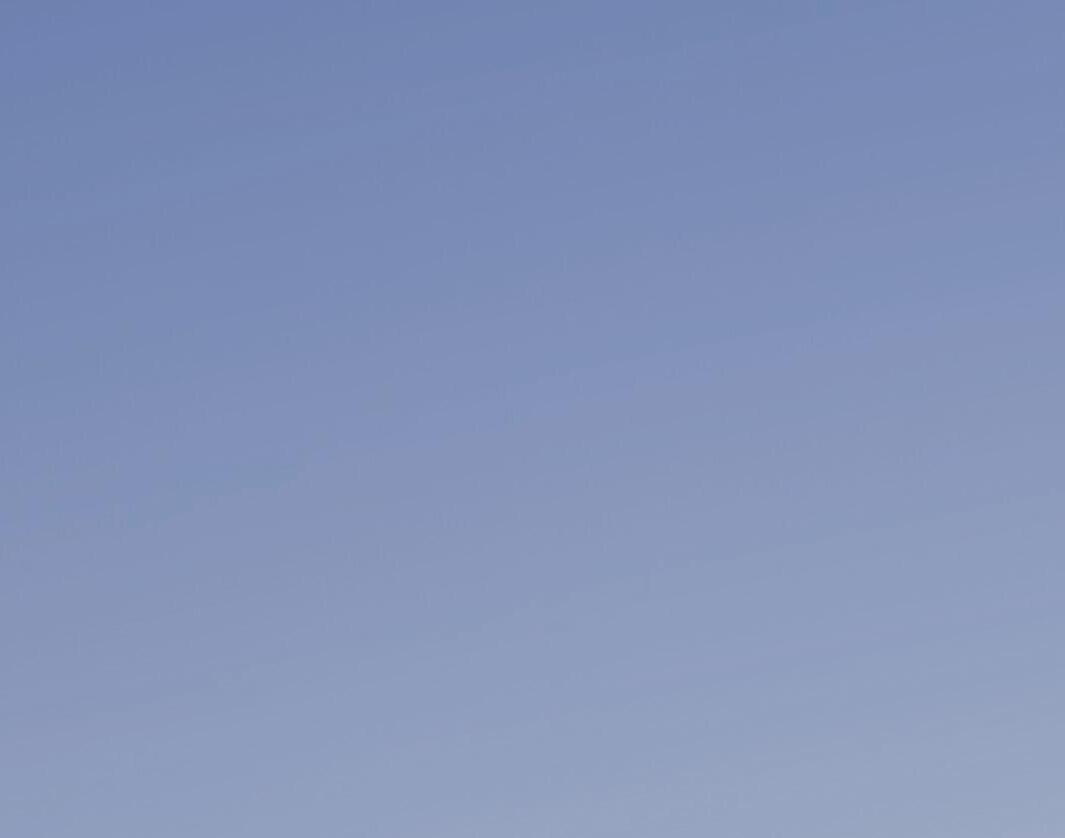
old Walser dialect words



parole dialettali antiche dei Walser




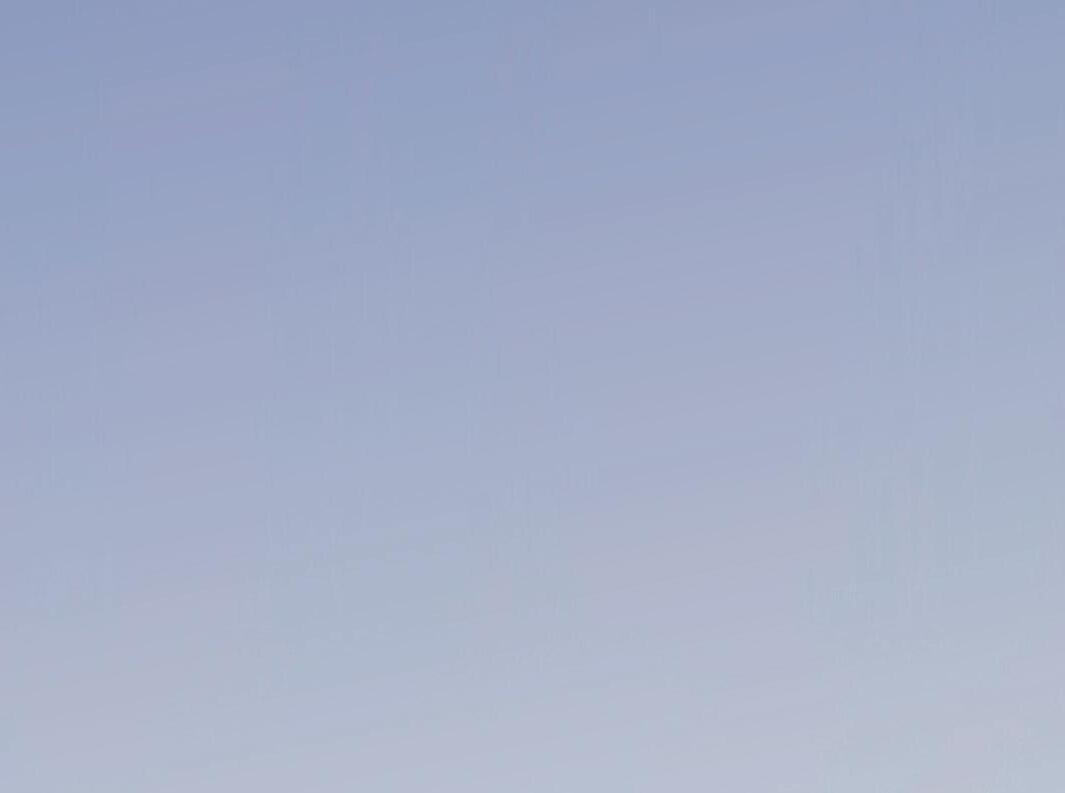

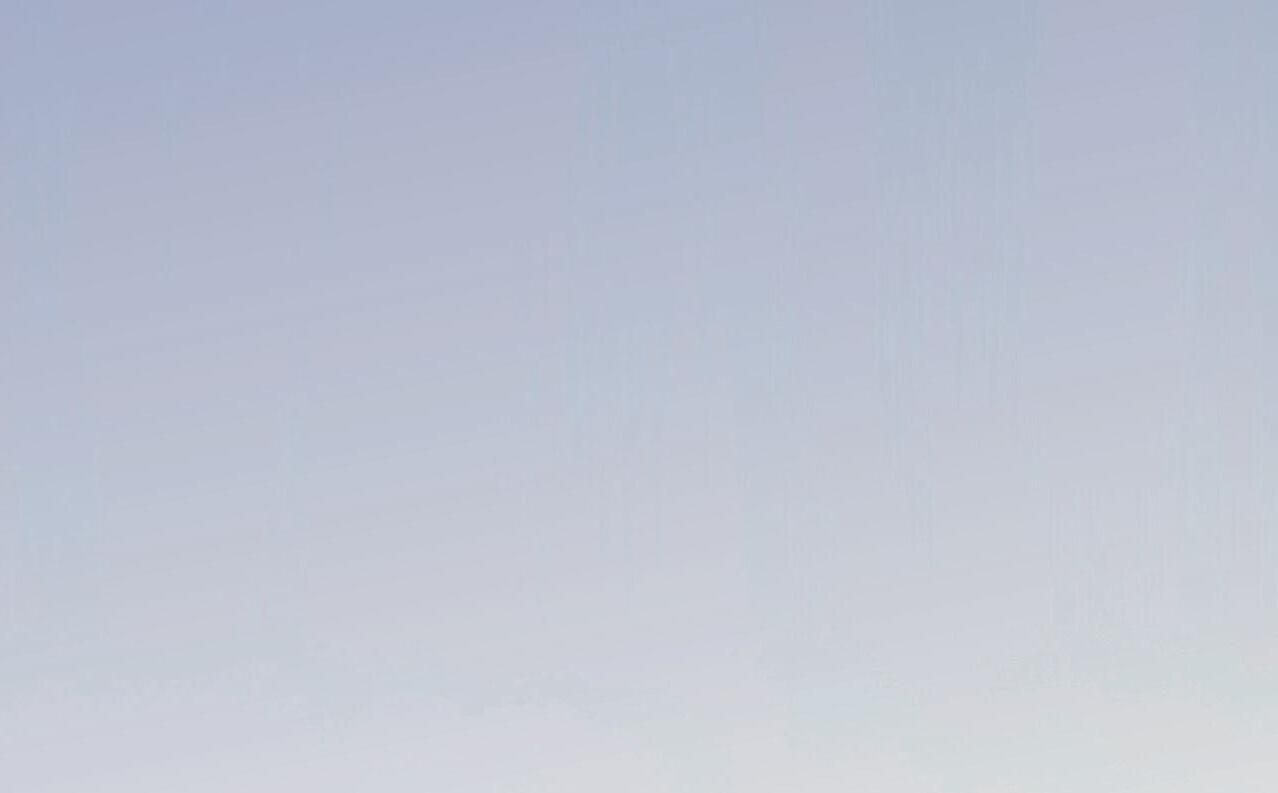


Ein Glossar alter Walser Dialektwörter
Sigi Jochum ist in Lech nicht nur bekannt, sondern auch vielseitig begabt. Ob als DJ hinter dem Mischpult, auf der Piste als Skilehrer oder bei der Arbeit im Skiservice – sein Repertoire ist breit. Doch jenseits all dieser Tätigkeiten schlägt sein Herz besonders für die Traditionen seiner Heimat: den Weiler Bürstegg und den Walser Dialekt. Wohin geht der Lecher Dialekt? Diese Frage beschäftigt nicht nur Sprachforscher, sondern auch leidenschaftliche Bewahrer wie Sigi Jochum. Mit feinem Gespür und viel Herzblut hat er unter jungen wie alten Einheimischen nachgefragt, was vom einst reichen Walser Wortschatz noch lebendig ist – und was schon fast vergessen. Die Antworten waren teils erfreulich, teils ernüchternd: Während Begriffe wie Hüslzüg, Nona oder stotzig noch durch die Gassen klingen, sind andere wie mudera, Ässnägele oder Schiilächa auf dem besten Weg, in der Bedeutungslosigkeit zu verschwinden.
Dieses Glossar ist ein Versuch, die bedrohten Wörter festzuhalten – als kleine Denkmalpflege für eine Sprache, die einst so selbstverständlich Teil des Alltags war. Damit sie nicht ganz verstummt, sondern vielleicht sogar wieder einmal liebevoll über die Lippen geht. Denn: „Dr Dialekt erholta“ – das ist mehr als ein Motto. Es ist eine Einladung, hinzuhören, nachzufragen, weiterzusagen.
Sigi Jochum is not only well-known in Lech, but also very talented. Whether as a DJ behind the turntables, on the piste as a ski instructor or working in ski service - his repertoire is broad. But beyond all these activities, his heart beats especially for the traditions of his homeland: the hamlet of Bürstegg and the Walser dialect.
What is happening to the Lech dialect? This question not only concerns linguists, but also passionate preservers like Sigi Jochum. With a keen instinct and a lot of passion, he asked both young and old locals what is still alive from the once rich Walser vocabulary - and what has almost been forgotten.
The answers were partly pleasing, partly sobering: while terms such as Hüslzüg, Nona or stotzig still ring through the streets, others such as mudera, Ässnägele or Schiilächa are well on the way to disappearing into insignificance.
This glossary is an attempt to record the endangered words - as a small monument to a language that was once such a natural part of everyday life. So that it doesn‘t fall completely silent, but perhaps be spoken again with affection. Because: ‘Dr Dialekt erholta’ is more than just a motto. It is an invitation to listen, to enquire, to pass on.
Sigi Jochum non è solo noto a Lech, ma ha anche un grande talento. Sia come DJ dietro il banco di mixaggio, sia in pista come maestro di sci o nel servizio nel noleggio e preparazione degli sci: il suo repertorio è ampio. Ma al di là di tutte queste attività, il suo cuore batte soprattutto per le tradizioni della sua terra: il borgo Bürstegg e il dialetto walser. Dove sta andando il dialetto di Lech? Questa domanda non riguarda solo i linguisti, ma anche gli appassionati preservatori come Sigi Jochum. Con un istinto acuto e molta passione, ha chiesto a giovani e anziani del posto cosa sia ancora vivo del ricco vocabolario walser di un tempo - e cosa è stato quasi dimenticato. Le risposte sono state in parte piacevoli, in parte deprimenti: mentre termini come Hüslzüg, Nona o stotzig risuonano ancora per le strade, altri come mudera, Ässnägele o Schiilächa stanno scomparendo nell‘insignificanza. Questo glossario è un tentativo di registrare le parole in via di estinzione, come un piccolo monumento a una lingua che un tempo era una parte così naturale della vita quotidiana. Affinché non cada completamente nel silenzio, ma magari torni a incrociare le nostre labbra con affetto. Perché “Dr Dialekt erholta” (trad. conservare il dialetto) è più di un motto. È un invito ad ascoltare, a informarsi, a trasmettere.

46 dialect words: unfortunately on the red list / 46 parole dialettali: purtroppo nella lista rossa
Rözer Regen und Sonne, gut zum Heinznen Sirgl bei einem Wollknäuel ein Durcheinander
iigschlächt
Gedärme pfoafat ausgebleichte Farbe
Reischpel Zimmarmannsbleistift Halbhuat wilder, grober Mensch
Schuahneschl Schnürsenkel
Laggsiera Durchfall preschthaft gebrechlich, unbeweglich mudera leichter Regen schleicht sich vom Berg ins Tal
schiiläha
Wetterleuchten
Bodogram zittern
bschnotta gerade noch, ganz knapp aateer sehr anhänglich
Boachtschufl Kehrschaufel
Materibuggl eiternde Wunde
Lörgat Baumharz, ist auch Zugsalbe Schwirla ein Blumengestell am Haus und innen am Ofen zum Wäsche trocknen nabelseer sehr empfindlich fruatig sehr begabt halbfruatig nicht der Hellste schlapbuucha abrackern
Luggmilch Schlagrahm zwirgla torkeln lurpa gierig trinken iipreisla Schuhe einfädeln ootreisma wild, ungestüm verdlächera verschwellen (Holzstiel) baschga fertig bringen, bewältigen aaläg sanfte Steigung
Gläfer blödes Gerede
Gluva Sicherheitsnadel
Griima Bauchweh güfta zeigen, was man hat, leicht angeberisch
Schpontis Respekt, fast Angst Diiges Geräuchertes
Schleisma Nassschneelawine Glaschtspiegl Sonnenbrille
Klemsa ein Spalt öffnet sich schälb schräg
iignora leichter Schlaf bändrig sehr unruhig lias geschmacklos
lahmfüdlig antriebslos fadagrad wirklich gerade
Düchel Holzrohrleitung
Rain and sun, good for drying Pioggia e sole, ideale per fare i cumuli di fieno chiamati Heinz a ball of wool a mess un gomitolo di lana intrecciato intestines intestino faded colour colore sbiadito carpenter's pencil matita da falegname wild, coarse person persona selvaggia, rozza shoelaces lacci delle scarpe diarrhoea diarrea frail, immobile fragile, immobile light rain creeps down from the mountain into the valley pioggia leggera fluisce dalla montagna a valle weather lights lampi lontani trembling tremante just barely appena appena very clingy molto attaccato dustpan paletta festering wound ferita supurrita tree resin, is also train ointment resina dell'albero, è anche unguento disinfettante a flower rack on the house and inside the oven for drying laundry un portafiori sulla casa e dentro vicino al forno per asciugare il bucato very sensitive molto sensibile very talented molto talento not the brightest non il più brillante slaving away sgobbare whipped cream panna montata staggering barcollare drinking greedily bere avidamente threading shoes infilare le scarpe wild, impetuous selvaggio, impetuoso swelling (wooden handle) gonfiare (manico di legno) manage it manage terminare, gestire gentle slope dolce pendio stupid talk discorsi stupidi safety pin spilla da balia stomach ache mal di stomaco show what you have, slightly boastful mostrare ciò che si ha, leggermente vanitoso respect, almost fear rispetto, quasi paura smoked affumicato wet snow avalanche valanga di neve bagnata sunglasses occhiali da sole a gap opens si apre un varco slanting obliquo light sleep sonno leggero very restless molto irrequieto tasteless insipido listless svogliato really straight veramente dritto wooden pipeline conduttura di legno
gut bekannt, aber nicht mehr häufig gesprochen
Broataschellig Muskelkater rönscha unruhiges Sitzen
Glutzga Schluckauf
Wättertätsch Alpensalamander z`lützel zu wenig Strucha Schnupfen
weidli schnell
Färgger Spülbecken
dribiliera drängen
eschpliziera erklären
schnogna im Essen herumstochern sälbher sehr bestimmend, stolz Aprilabuschili ein in den April Geschickter gatzga Ruf der Henne , nachdem sie ein Ei gelegt hat
Hängert Stuabate gotzig klein, wenig buuschta sich schwer beleidigt zeigen dötterla Angst haben an Leng ha außerordentlich geschickt drüa an Gewicht zulegen
Drüa Holzstück am Seil zum Heu binden aaweigga etwas in Schwung bringen, mit Ho-ruck in Schwung bringen pflüterla Blasen werfend, brodelnd Bliiwis Bleistift
Koldri jemand mit harter Schale aber weichem Kern biischta stark schnaufen verübla die Wunde heilt nicht verzuslat durcheinander gebrachte Haare überzwärsch verkehrt arbeiten, überkreuzt wässerla appetitanregend, verlockend amächelig den Mund wässrig machen Leibate Essensreste
schaffa, schenta und schinaggla anstrengende Arbeit Turra dürrer Baum kebig wehleidiger Mensch haarschmeitza an die Wand klatschender Regen
Fleigatätscher
Fliegenklatsche
Gööder Sehnen beim Fleisch (z. B. Gulasch)
Schpeizga Schmeissfliege
Bschnidesel Schindelbock gmuttlat schmucklos, enthornt briascha Vieh brüllt jämmerlich Fazanedli Taschentuch (in ganz Vorarlberg bekannt) soda verschütten
Schnapp und Tätsch sofort musper gut drauf
aching muscles muscoli doloranti restless sitting seduto irrequieto hiccups singhiozzo
alpine salamander salamandra alpina too little troppo poco sniffles raffreddore fast veloce sink lavandino pushing spingere explain spiegare poking around in food frugare nel cibo very authoritative, proud molto autorevole, orgoglioso a skilful April credere ad uno scherzo d'aprile call of the hen after she has laid an egg richiamo della gallina dopo che ha deposto un uovo stuabate stuabate small, little piccolo, poco take offence tenere il broncio, essere offeso be afraid avere paura extraordinarily skilful straordinariamente abile put on weight ingrassare piece of wood on a rope to tie hay pezzo di legno su una corda per legare il fieno get something going, to set something in motion with a jolt far partire qualcosa, mettere in moto qualcosa blistering, bubbling bollire, gorgogliare pencil matita
someone with a hard shell but a soft core qualcuno con un guscio duro ma un nucleo morbido puffing heavily sbuffare forte the wound does not heal la ferita non guarisce messy hair capelli scompigliati working upside down, crossed lavorare al contrario, incrociare appetising, tempting appetitoso, allettante make the mouth water far venire l'acquolina in bocca leftovers avanzi hard work duro lavoro scrawny tree albero magro snivelling person persona piagnucolosa rain slapping on the wall pioggia che sbatte contro il muro fly swatter scacciamosche tendons in meat (e.g. goulash) sinews in meat (e.g. goulash) tendini nella carne (es. gulasch) blowfly mosca da pesca shingle goat capra di scandole unadorned, dehorned disadorna, scorticata cattle roar pitifully bovini che ruggiscono pietosamente handkerchief (known throughout Vorarlberg) fazzoletto (conosciuto in tutto il Vorarlberg) spill rovesciare immediately immediatamente in a good mood di buon umore gesprochen
dialect words that are still frequently used / 46 parole dialettali ancora
schräpfa bremsen
Wonderälla eine neugierige Person
Biascht erste Milch nach dem Kalben
Biaschtbrota köstliches Gericht aus der Erstmilch schwiina abnehmen sürfla schlürfen
eeschtämpf verbohrt, altmodisch gschänta naschen, stiebitzen
niffla reizen, necken
Kluppseckel Geizkragen
nüaschla auf der Suche nach … vergitzla ungeduldig
lütaschüch und vehnärsch menschenscheu aber tierliebend an Gischpel ein unruhiges Kind, kaum zu bändigen
Lätsch saure Miene, der macht an Lätsch ommi
Poschtur Figur
gooma Kinder hüten
Chutza Wolldecke
giira
Knarren einer Türe fera letztes Jahr, vorfera = vorletztes Jahr gragglig gebrechlich
Ruuda, Flära heilende Wunde
Nona Großmutter
Schmuttera
Beule, Verletzung eines Baumes
Pfulva Kopfkissen fuara ich bin gesättigt
Fotzahobel Mundharmonika
Schlorga alter Schuh, schlorga, unschön laufen
Zaggler nicht wirklich gepflegter Mensch Hudra alte zerrissene Kleidung verlotscha etwas verlieren tschiaga krumm laufen
Weetig Schmerzen kogna schwere, oft auch sinnlose Arbeit
Rei steile Wiese (von Familie zu Familie verschieden ausgesprochen) henderfür er arbeitet nicht mit Vorteil
Gälta, Bachgälta, Wäschgälta
Behältnis für Teig oder Wäsche schesala Kinderwagen fortbewegen
Googa Kinder
stotzig sehr steil
storra langsam, lustlos arbeitend boafa sabbern
müchtala modriger Geruch gschpässig seltsam
hüsla Kinder spielen mit Hüslzüg eigagrindig stur, eigensinnig
brake frenare
a curious person una persona curiosa first milk after calving primo latte dopo il parto di un vitello delicious dish made from first milk piatto delizioso a base di primo latte take dimagrire slurp sorseggiare, succhiare facendo rumore stubborn, old-fashioned testardo, all'antica nibble, poke sgranocchiare, stuzzicare tease, tease stuzzicare miser avaro in search of ... in cerca di ... impatient impaziente shy but animal-loving timido ma amante degli animali a restless child, hard to tame un bambino irrequieto, difficile da domare sour face, he makes a sour face ommi faccia acida, malcontenta figure figura looking after children occuparsi die bambini woollen blanket coperta di lana creaking of a door scricchiolio di una porta last year, vorfera = year before last due anni fa frail fragile healing wound ferita in via di guarigione grandmother nonna bump, injury to a tree ferit ad un albero pillow cuscino
I'm full sono sazio / sono sazia harmonica armonica da bocca
old shoe, schlorga, old shoe, schlorga, unattractive walk scarpa vecchia, camminata sgraziata not really well-groomed person persona non proprio curata old torn clothes vecchi vestiti strappati lose something perdere qualcosa crooked walk camminata storta pain dolore hard, often pointless work lavoro duro, spesso inutile steep meadow (pronounced differently from family to family) prato scosceso (pronunciato in modo diverso da famiglia a famiglia) he does not work with advantage non lavora con vantaggio container for dough or laundry contenitore per la pasta o il bucato moving pram carrozzina in movimento children bambini very steep molto scosceso slow, listless working lavoro lento, svogliato drooling sbavare musty smell odore di muffa strange strano children play with hüslzüg i bambini giocano con giocattoli da casa stubborn, obstinate testardo, ostinato
dürfet’r joa ned lugg lo.
Bereits 1979 schrieb der Sprachwissenschaftler Dr. Eugen Gabriel über die Walser Mundart am Tannberg mit ernsten Worten: „Es muss erwähnt werden, dass der Dialekt in den großen Fremdenverkehrsgemeinden des Tannbergs (Lech) von der jüngeren Generation praktisch nicht mehr gesprochen wird.“
Doch auch wenn diese Prognose düster war – der Lecher Dialekt hat sich bis heute gehalten. Nicht überall, nicht in jeder Familie, aber doch – wie Unkraut, das unbeirrbar zwischen den Pflastersteinen hervorwächst. Zäh, eigenwillig, lebendig. Gerade deshalb richtet sich dieser Appell an alle Freundinnen und Freunde des Dialekts: Passat uf, dass biönsch no lang im Lächer Dialekt gredt wird! Denn leicht verschwindet, was nicht gepflegt wird. Und wo nichts mehr gesagt wird, da bleibt auch nichts mehr übrig.
Also: dönd hofele und fallad ned! – Lasst uns weiterreden, im Klang unserer Heimat.
Doa dürfet’r joa ned lugg lo.
Why the Walser dialect must not fall silent for a long
Back in 1979, the linguist Dr Eugen Gabriel wrote about the Walser dialect on the Tannberg with serious words: ‘It must be mentioned that the dialect is practically no longer spoken by the younger generation in the large tourist communities of the Tannberg (Lech).’ But even if this prognosis was gloomy, the Lech dialect has survived to this day. Not everywhere, not in every family, but still - like a weed that grows unwaveringly between the cobblestones. Tough, wilful, alive. This is precisely why this appeal is addressed to all friends of the dialect: Passat uf, dass biönsch no lang im Lächer Dialekt gredt wird! Because what is not cultivated easily disappears. And where nothing is said, nothing remains.
So: dönd hofele und fallad ned! - Let‘s keep talking in the sound of our homeland.
dürfet’r joa ned lugg lo.
Perché il dialetto walser non deve tacere ancora a lungo
Già nel 1979, il linguista Eugen Gabriel scriveva del dialetto walser sul Tannberg con parole serie: “Va detto che il dialetto non è praticamente più parlato dalle giovani generazioni nelle grandi comunità turistiche del Tannberg (Lech)”. Ma anche se questa previsione era fosca, il dialetto di Lech è sopravvissuto fino ad oggi. Non ovunque, non in tutte le famiglie, ma comunque - come un‘erbaccia che cresce incessantemente tra i ciottoli. Duro, ostinato, vivo. È proprio per questo che questo appello è rivolto a tutti gli amici del dialetto: Passat uf, dass biönsch no lang im Lächer Dialekt gredt wird! Perché ciò che non viene coltivato scompare facilmente. E dove non si parla nulla, nulla rimane.
Perciò: dönd hofele und fallad ned! - Continuiamo a parlare nel suono della nostra patria.
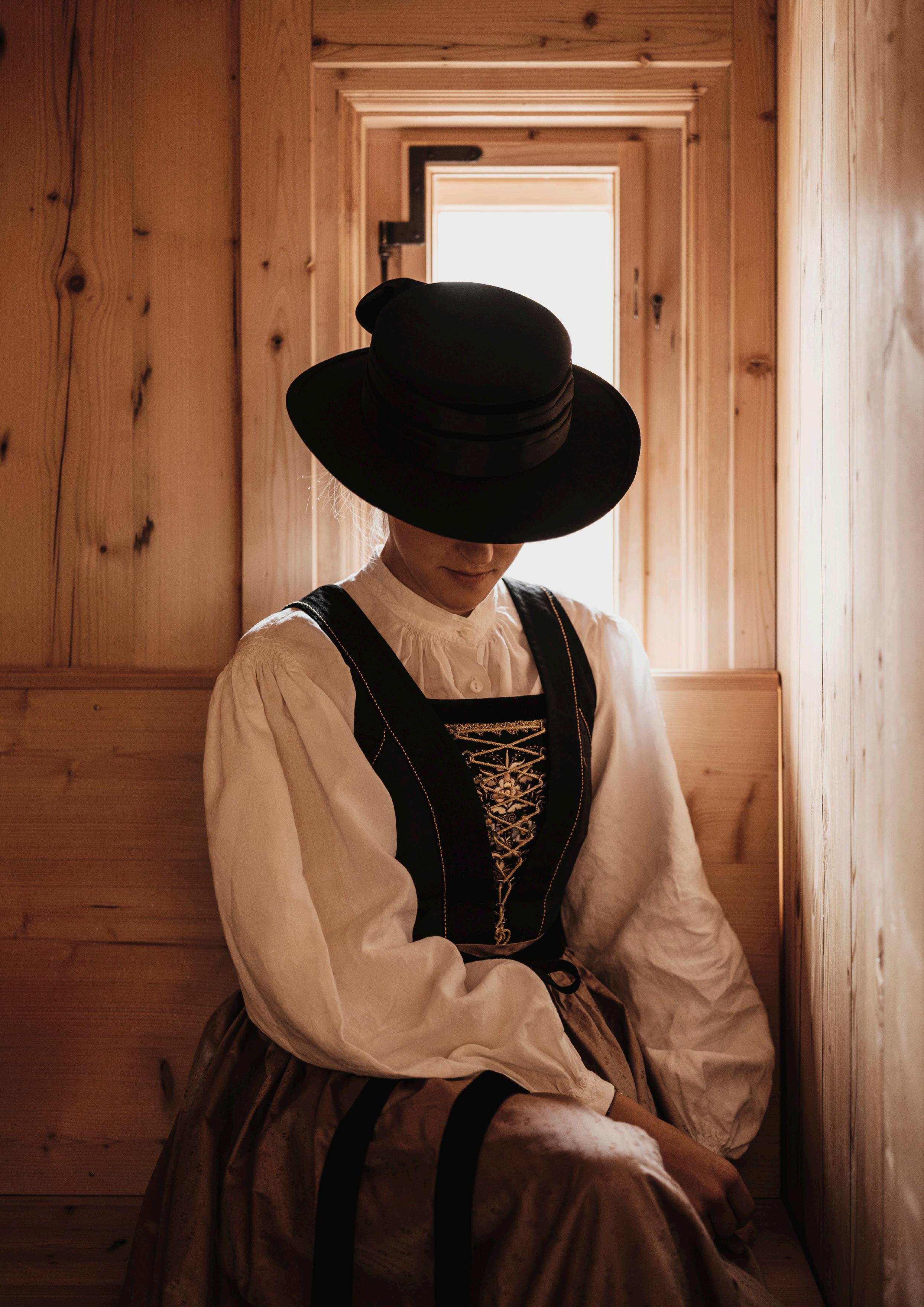
Ob hoch hinaus mit der Bergbahn, entspannt durch blühende Wiesen wandern oder abwechslungsreiche Tage mit der Familie verbringen – mit der Lech Card holen Sie das Beste aus Ihrem Urlaub. Für alle, die den Sommer mit Leichtigkeit und Vielfalt genießen möchten.
Lech Card – more summer for you:
Mountain lifts, hikes, and family activities let you enjoy a relaxed and varied holiday.
Overview of all services:
















Für den Inhalt verantwortlich / Responsible for the content: Lech Zürs Tourismus GmbH
Fotos: Lech Zürs Tourismus,Ian Ehm, Manuel Peric, Daniel Zangerl, Katerina Fiser, Weishäupl, Jana Sabo
Trotz sorgfältiger Recherchen Änderungen und Druckfehler vorbehalten.
Lech Zürs Tourismus übernimmt keine Haftung für allfällige Fehler. Stand Juli 2025.
Despite careful research, we reserve the right to make changes and printing errors.
Lech Zürs Tourism accepts no liability for any errors. Status July 2025.





